

CHICAGO’S FREE WEEKLY SINCE 1971 | APRIL 23, 2020
CITY LIFE
03 Public Service
Announcement Zoom over to these online classes.

FOOD & DRINK
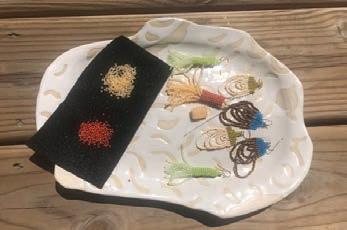
04 Key Ingredient Introducing the first installment of Pandemic Pantry, in which Funkenhausen’s Mark Steuer makes a miracle out of mushy pasta
08 News Does the mayor’s COVID-19 executive order put her on light footing?
09 Dukmasova | Pets Animal shelters have been overwhelmed with adoption applications during

astonishing images of humanity’s impact on the planet’s topography; Roar is a case against disrupting the animal kingdom on a whim.
OPINION
Identity and Culture Seeking safety isn’t so easy if you’re battling COVID-19 while Black.
‘American-ness’ On rejecting anti–Asian American rhetoric and standing up to hate



NEWS & POLITICS
06 Joravsky | Politics Why Chicago’s most loyal Bulls fan missed the opening of The Last Dance


the pandemic.

10 Immigration Coronavirus leaves immigrants trapped in a byzantine court system, without lawyers and more frightened than ever.
ARTS & CULTURE
13 Profile Before there was Joe Exotic, there was Roy Boy Cooper.
15 Sex How to quarantine while dating multiple folks
THEATER
17 Feature Theatre Y gives viewers a virtual anthology of András Visky’s work.

FILM
19 Movies of Note Love Wedding Repeat goes beyond just being a mindless romance; Earth contains
MUSIC & NIGHTLIFE
21 Galil | Feature Christen Thomas booked shows for a decade with the Empty Bottle and Metro, but that work was just the beginning of the love, joy, and support she showered on the scene.
24 Records of Note A pandemic can’t stop the flow of great music. Our critics review releases that you can enjoy at home.
28 The Secret History of Chicago Music The Ashby Ostermann Alliance have a second album a er 37 years.
29 Early Warnings Rescheduled concerts and other updated listings
29 Gossip Wolf Disappears, White/ Light, and Steve Shelley drop a collaboration recorded 11 years ago, two-thirds of Weatherman share their first music since moving to a medieval French village, and more.
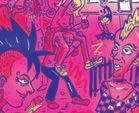
Savage Love Dan Savage offers advice to a man who has an anxiety attack when he sees his wife naked.
CLASSIFIEDS
The saga of Punkin’ Donuts
on how a
a confluence
THE COVER: ILLUSTRATION BY ANNA JO BECK. FOR MORE OF BECK’S
THEATER
ASSOCIATE
READER EMPLOYEE, E-MAIL: (FIRST INITIAL)(LAST NAME)
PUBLISHER TRACY
CONTACT
SUJAY KUMAR, KAREN HAWKINS
HAWLEY
MONTORO
KERRY REID
BRIANNA WELLEN
JAMIE LUDWIG
SENIOR WRITERS MAYA DUKMASOVA, LEOR GALIL, DEANNA ISAACS, BEN JORAVSKY, MIKE SULA
EDITORIAL ASSOCIATE S. NICOLE LANE GRAPHIC DESIGNER AMBER HUFF
LISTINGS COORDINATOR SALEM COLLO-JULIN CONTRIBUTORS ED BLAIR, NOAH BERLATSKY, LUCA CIMARUSTI, MARISSA DE LA CERDA, MARI COHEN, JOSH FLANDERS, SHERI FLANDERS, JACK HELBIG, IRENE HSAIO, CATALINA MARIA JOHNSON, MONICA KENDRICK, STEVE KRAKOW, NOËLLE D. LILLEY,JAMIE LUDWIG, MAX MALLER, ADAM MULLINS-KHATIB, J.R. NELSON, JEFF NICHOLS, MARISSA OBERLANDER, MATTHEW SIGUR, CATEY SULLIVAN
DIRECTOR OF DIGITAL JOHN DUNLEVY DEVELOPMENT DIRECTOR COLETTE WILLARD SOCIAL MEDIA COORDINATOR JANAYA GREENE MEDIA PARTNERSHIPS COORDINATOR YAZMIN DOMINGUEZ
STAFF AND SPECIAL PROJECTS ASSISTANT TARYN ALLEN
SPECIAL EVENTS CONSULTANT KRISTEN KAZA
ADVERTISING
312-392-2970, ADS@CHICAGOREADER.COM CLASSIFIEDS: CLASSIFIED-ADS@CHICAGOREADER.COM
SALES DIRECTOR PATTI FLYNN
VICE PRESIDENT OF SALES AMY MATHENY CLIENT RELATIONSHIP MANAGER TED PIEKARZ SENIOR ACCOUNT REPRESENTATIVES
LENI MANAA-HOPPENWORTH, LISA SOLOMON ACCOUNT REPRESENTATIVES GREG MCFALL, NANCY SANCHEZ CLASSIFIED SALES MANAGER WILL ROGERS
NATIONAL
VMGADVERTISING.COM
1-888-278-9866
JOE LARKIN AND SUE BELAIR
312-392-2970
When
drama is good for kids
The stay-at-home chronicles

2 CHICAGO READER - APRIL 23, 2020 ll
30
31
32
34 Jobs 34 Apartments & Spaces 34 Marketplace THIS WEEK CHICAGO READER | APRIL 23, 2020 | VOLUME 49, NUMBER 29 TO
ANY
@CHICAGOREADER.COM IN THIS ISSUE
Leor Galil
doughnut-shop parking lot became
of youth subcultures.
online
Kerry Reid on how virtual classes keep theater alive for young artists.
What we’re reading, watching, listening to, etc., to pass the time. THIS WEEK ON CHICAGOREADER.COM ON
WORK, GO TO ANNAJOBECK.COM.
BAIM EDITORS IN CHIEF
CREATIVE LEAD RACHEL
MUSIC EDITOR PHILIP
AND DANCE EDITOR
CULTURE EDITOR
EDITOR
ADVERTISING VOICE MEDIA GROUP
DISTRIBUTION CONCERNS distributionissues@chicagoreader.com
CHICAGO READER L3C BOARD PRESIDENT DOROTHY R. LEAVELL TREASURER EILEEN RHODES SECRETARY JESSICA STITES AT-LARGE SLADJANA VUCKOVIC CONSULTANT CAROL E. BELL READER (ISSN 1096-6919) IS PUBLISHED WEEKLY BY CHICAGO READER L3C 2930 S. MICHIGAN, SUITE 102 CHICAGO, IL 60616 312-392-2934, CHICAGOREADER.COM COPYRIGHT © 2020 CHICAGO READER PERIODICAL POSTAGE PAID AT CHICAGO, IL ALL RIGHTS RESERVED. CHICAGO READER, READER, AND REVERSED R: REGISTERED TRADEMARKS ®
public service announcement
Zoom over to these online classes
By SALEM COLLO-JULIN
It’s a brave new world during these days of quarantine, and for the technology-challenged among us, it can be daunting to keep up. If you’re willing to learn a few basics, there’s a world of free and low-cost workshops on the cyberweb that can help you exercise your brain and give you new skills.
(More than) the basics at Goodwill Community Foundation
The Goodwill Community Foundation and Goodwill Industries of Eastern North Carolina originally created this series of tutorials and classes for the patrons of Goodwill’s rehabilitation and ready-to-work programs, but they are also free for general public use. It’s a Computers 101 group of tutorials covering things like the basics of Skype and quick design tips that can be helpful for those new to programs like Photoshop. The tutorials can help people who might be overwhelmed with having to use new-to-them software to make their newly remote working world work. There are
tutorials available in several languages that are hard to find through other free resources, including Arabic and Dutch. The Chicago branch’s website includes local financial help information and was recently updated with a list of COVID-19 resource links.

Who’s Zoomin’ whom?
Zoom is just one of the many video conferencing platforms that are free to use (whither WebEx?), but it’s quickly become a go-to for a lot of personal and professional meetings. As with almost every piece of machinery or software ever created, most people’s problems with and questions about using Zoom would be answered if they just read the support documents, which include how-toget-started tutorials. What does this button do? How do I see all the people on this conference? Read the support documents! Zoom actually rewrote theirs in the last month to make an even easier “this is how we do this” explainer for all their new users. I also like to
TUMISU / PIXABAY
point people to Owl Labs’s website. They’re a Massachusetts-based company that makes remote-meeting hardware, and in March they created a great one-sheet how-to on Zoom for their blog.
All right you MOOCs
Massive open online courses, or MOOCs, are classes created specifically with an unlimited number of students and participation across the web in mind. While the origins of MOOCs come from the open web movement (to keep source material open and available for anyone to use and redistribute in the original spirit of the Internet), many colleges and universities have adopted the model as a way to have the public interact with their creative material. Keep in mind that most of the universities offering these free versions of past courses will not offer you credit unless you’re currently enrolled as a tuition-paying student. Several classes that are perennially available are listed at the Open Culture website (an online resource for web learners), including a class in organizational leadership originally taught through Northwestern University, and audio versions of many of Leo Strauss’s University of Chicago lectures on philosophy.
Plants, masks, and belly dancers
Some local nonprofits have also started creating online learning content. Most of these classes are available for a small fee that benefits the teachers and the organization. Plant Chicago in Back of the Yards is o ering a few onetime workshops dedicated to gardening at home: Build an Earth Bucket (also known as a container garden) on Saturday, April 25, and Growing Microgreens at Home on Sunday, May 17. Edgewater’s art space 6018 North has made online space for the artists from its “In Flux: Chicago Artists and Immigration” exhibition that was supposed to be on view at the Chicago Cultural Center until May. Artist Aram Han Sifuentes will be conducting a mask-making workshop and work session via Zoom on Saturday, April 25. And the venerable Old Town School of Folk Music continues its well-loved music classes and dance workshops on the Web. Some unique upcoming classes include Introduction to Slide Guitar and Egyptian Belly Dancing. v
APRIL 23, 2020 - CHICAGO READER 3 CITY LIFE
So you can stop hearing “Yeah, no, you’re still on mute”
once and for all
@hollo Chicago's Free Weekly Since 1971 We Couldn't Be Free Without You— Support Community Journalism chicagoreader.com/donate
FOOD & DRINK

FEATURE

Key Ingredient: Pandemic Pantry

Funkenhausen’s Mark Steuer makes a miracle out of mushy pasta.
By MIKE SULA
Mark Steuer called me a jackass.














































































Chefs do curse me every now and then, but usually it’s the result of something unflattering I’ve written in a restaurant review. If memory serves, I’ve written nothing but nice things about Steuer throughout his career at restaurants such as Hot Chocolate, Carriage House, El Che Bar, and most recently—and currently—Funkenhausen. But I never ordered a dish of mushy spaghetti from any of his kitchens before.
A few weeks ago as underworked or out-ofwork chefs across the land continued to flood social media with self-isolation home-cooking videos shot on their phones, Steuer suggested to me that the time might be right to reboot



 STEUER
STEUER





the Reader’s acclaimed Key Ingredient series. OK, I decided. But I’ll make you regret it


Key Ingredient was a cooking show produced by then-Reader sta er Julia Thiel and food writer/filmmaker Michael Gebert, in which Chicago’s baddest chefs challenged their colleagues to redeem unusual, underappreciated, or often abhorrent ingredients by showcasing them in beautiful plated dishes that might or might not have been edible.
It all started in 2010 when I challenged Grant Achatz with Indonesian kluwak kupas—the seeds of the kepayang tree—and he produced a Tom & Jerry cocktail with them. Achatz threw Chinese black beans at Curtis Du y, who then punked John des Ros-

4 CHICAGO READER - APRIL 23, 2020 ll
Overcooked pasta okonomiyaki MARK
FOOD
Chicago-area
chicagoreader.com/food
iers with geraniums. Thiel and Gebert won a James Beard Award for their work that year, and they went on to produce a total of 177 episodes, featuring the city’s most talented and disgruntled chefs, cooking with everything from Malort to natto to balut to whale vomit, before gracefully retiring Key Ingredient in 2018.
Steuer took his turn in 2011, when he was the chef at the Bedford, making a jibarito with bananas because his old boss Mindy Segal (sorghum syrup) knew he hated them. They’re “reminiscent of old lobster, like when it gets overcooked,” he said.
That gave me an idea.
This time around the chefs will be their own videographers, and it seemed natural that Steuer would take the first challenge in what we’re calling Key Ingredient: Pandemic Pantry. So I rewarded his initiative with mushy overcooked pasta, something I figured he rarely confronted but that lots of isolated home cooks might be contending with a lot lately.
And then he called me a jackass, and got to work.
His dish? A version of the savory Japanese pancake okonomiyaki , which cleans out the fridge and crisps up those soggy noodles you
left in the bottom of the pot overnight after you drank all the hand sanitizer and passed out on the kitchen floor.
Steuer has kept the lights on at Funkenhausen in Ukrainian Village by o ering delivery or curbside pickup through a contactless window from a relatively broad menu that includes a version of the kick-ass smoked Amish chicken I loved so much when I reviewed it.
The restaurant’s also sponsoring a GoFundMe and selling gift cards in support of its sta , which would certainly benefit from your attention.
Still, the chef found time to shoot his video, which you can watch online after a brief introduction to the reboot—from me. In it, I’m sheltering in a secret location that is in no way an illegal speakeasy, wearing one of the elaborate disguises I used to adopt whenever I’d go out on a restaurant review. Haven’t been doing much of that lately. (Thanks, COVID-19 . . . Thanks, Trump.)
Will Steuer be putting the pasta okonomiyaki on his carryout menu? “We will not,” he says. But check out his recipe for the next time you forget that there’s spaghetti boiling on the stove.
And don’t worry: you won’t be seeing me again.
Who’s next:
ERICK WILLIAMS of Hyde Park’s VIRTUE, cooking with pickled eggs. “Because I love pickles,” said Steuer. “And I love eggs. But I don’t know why anyone would do that to an egg.” v
Overcooked Pasta Okonomiyaki Chef Mark Steuer, Funkenhausen
1 cup all-purpose flour
¼ teaspoon baking soda
½ teaspoon salt
1 cup water
1 cup overcooked spaghetti (or whatever you overcooked)
2 tablespoons minced garlic
2 tablespoons diced Fresno pepper
½ cup sliced mushrooms
½ cup shredded cabbage or brussels sprouts
2 tablespoons diced onions
2 tablespoons rice wine
1 tablespoon soy sauce
For the batter, whisk together flour, baking soda, and salt, then whisk in water until smooth. Allow to sit for 20 minutes.
For the noodles, in an oiled nonstick pan,
sweat all vegetables until soft, then deglaze with rice wine and soy. Reduce. In a bowl, pour over noodles and stir to combine. Set aside.
Clean the pan, and over medium high heat, pour about 1 cup of the batter and swirl the pan to evenly distribute. While the batter is still wet, add the noodle and vegetable mixtures to evenly cover the batter. Once the batter starts to set, press down on the noodles lightly to make sure they adhere. Cook for about four minutes on medium, then flip the pancake (use two spatulas if you need to).
Add a little more oil to the pan and cook for about five more minutes.
Invert onto a cutting board and cut into quarters, then transfer to a plate and garnish with any or all of the following:
• Fried egg
• Scallions
• Okonomiyaki sauce
• Hot sauce
• Mayo
• Fried garlic
• Fried shallots
• Sesame seeds
• Bonito flakes
APRIL 23, 2020 - CHICAGO READER 5 FOOD & DRINK
Search the Reader’s online database of thousands of
restaurants at
@MikeSula Chicago's Free Weekly Since 1971 We Couldn't Be Free Without You— Support Community Journalism
NEWS & POLITICS

POLITICS
Benny, the Bulls fan
 By BEN JORAVSKY
By BEN JORAVSKY
On Sunday, millions of Bulls fans across the world gathered around their TVs to watch the first installment of The Last Dance—Jason Hehir’s much-heralded ten-part documentary miniseries about Michael Jordan and my beloved Bulls.
Alas, I was not one of them. I know what you’re thinking: Benny Jay, how could you, the most dedicated of Bulls fans, not watch this tribute to your favorite team’s greatest achievement?
And the answer is . . .
I don’t have cable. I’ve never had cable— even in the glory years. I was a broke-ass
Reader writer—who could a ord it?


So, it’s altogether fitting that I not be able to watch this ESPN miniseries as I couldn’t watch the events unfolding in real time—at least from the comfort of my home.
But don’t think I didn’t watch them at all. Oh, no, I long ago learned to adapt to my cablelessness, watching Bulls games in bars, restaurants, and bowling alleys.
Mostly, I got by with a little help from my friends, particularly my dear friend Cap, who shares my love for the Bulls. Though during blowouts, Cap reserves the right to turn to The Big Bang Theory—the man loves The Big Bang
6 CHICAGO READER - APRIL 23, 2020 ll
Why Chicago’s most loyal Bulls fan missed the opening of The Last Dance
Raise ’em up if you have cable! TONY THE TIGER
Theory , people—which always seems to be playing somewhere on cable.
Not having seen the Bulls documentary does not, however, prevent me from commenting about it. In fact, I find myself constantly giving editing advice to Hehir, a man I don’t know, about a documentary I’ve never seen. To cite one example . . .
Hey, Hehir—make sure you mention Norm Van Lier! You cannot produce a documentary about the Bulls without mentioning my alltime favorite Bull!
The thing about me and my Bulls obsession is that I have a bizarre, almost Rain Man–like ability to instantly tell you where I was and what I was doing at any great, or even not-sogreat, moment of the Jordan run.
As in the day when Jordan forever changed—with one shot—the attitude Bulls fans had toward their team. Before that, the best Bulls teams were filled with inspirational overachievers who were just good enough to break your heart by losing in the playo s because they didn’t have a superstar closer.

All of that changed, of course, on May 7, 1989, when . . . well, let me set the scene.
Mayor Daley had just been elected to the first of six terms. Not sure how that’s germane, but I thought I’d mention it—’cause, you know, I am a political writer.
The best-of-five, first-round series against Cleveland was tied at two. The Bulls should have eliminated the Cavs in game four, except Jordan missed a clutch free throw.
That’s correct. Jordan missed a free throw. Naturally, I can tell you where I was when he missed it . . .
I was at a dinner party with a bunch of artsy-fartsy types. Not a TV in sight, much less one with cable. This bunch didn’t even know the Bulls were playing. I snuck out of the dining room to listen on a portable radio in the kitchen.
Game five was on a Sunday afternoon on national TV, meaning even I would get to watch. But—get ready for this—I had to work.
Yes, work. On a Sunday. The Reader had assigned me to write a story about an all-class reunion at Alvernia, a Catholic high school that was closing because of falling enrollment. As any freelancer can understand, I was in no position to turn down a paying assignment— even for one of the greatest Bulls games in history.
Hey, Hehir, you should do a documentary
about the trials and tribulations of Reader writers!




By the time I broke away from that reunion, the fourth quarter had started. With no time to drive home, I dashed to a nearby apartment where my wife was visiting a friend, and I arrived just in time to catch the final play. And we all know what happened—come on, Chicago, all together now . . .
Bulls’s ball. Down one. Three seconds left . . .
Brad Sellers—who never gets the credit he deserves for his inbounding pass—gets the ball to Jordan. And Jordan drives left, jumps, hangs for what seems like forever, and shoots at the buzzer . . .
Bulls win!
Man, when Jordan hit that shot, I started jumping up and down like a pogo stick, bellowing, “Yeah, yeah, yeah!”
As I bellowed, I looked down to see my infant daughter sitting on the floor, staring up at me in quizzical disbelief, as if to say: “What the f . . .”








It was just my way of telling her—welcome to the dance, kid.

Two years later, the Bulls broke through and won their first championship, and all of Chicago celebrated—by then, even the artsy-fartsy crowd had learned to bask in the greatness of Michael Je rey Jordan. Some of them anyway.
If this column was a documentary, the screen would now fade to black as updates scrolled by:































In 2011, Daley left o ce—probably looking to go out on top before someone beat him. Just like Jordan’s Bulls.
For the last few years, the building that housed Alvernia has been a CPS magnet high school.
And my infant daughter is grown up and living in LA. But she’s no Lakers fan. Don’t even think that. Man, that girl’s a Bulls fan for life.
And me? I’m as faithful as ever to my beloved Bulls. As bad as they are. And they’re bad. In fact, the only good thing you can say about the coronavirus pandemic is that it prematurely ended another wretched Bulls season.

I know I’ll get around to watching The Last Dance. I just don’t know when or how. Maybe I’ll sneak over to Cap’s house—though he’ll probably make me wear a hazmat suit. In the meantime . . .





Hey, Hehir, don’t forget to give Brad Sellers credit for that pass! v

Important Reader News

Due to business closings and for safety purposes, the Chicago Reader is going biweekly with a print run to 600+ locations, including our box route. On the o weeks (April 9, 23, May 7) the Reader is just being distributed as a free PDF, with a small press run to ful ll subscriber and library mailings.


We are also making a limited number of copies available for special short-term subscriptions, 12 weeks for $50, and every week’s issue will be mailed to your home.
Just a few hundred copies will be sold of these very limited souvenir editions of the Reader: secure.actblue.com/donate/chicago-reader-print-12
APRIL 23, 2020 - CHICAGO READER 7 NEWS & POLITICS
@joravben
Thank you, The Reader team Find the full curated PDF download of the Reader at by Wednesday each week. chicagoreader.com/issues
CITY GOVERNMENT
A viral budget grab
By DAVE GLOWACZ
Buried in an April 9 Chicago Sun-Times editorial was this line: “[Mayor Lori] Lightfoot is free to move large sums between departments, without City Council approval, under executive powers granted to her last month.”

Which invites the question: Who granted Lightfoot such sweeping “executive powers”?
She did.
On March 17, a mayoral press release had set the table:
“During these unprecedented times we cannot proceed with business as usual when the health and welfare of our residents and communities are at risk,” the mayor was quoted as saying.
“Mayor Lightfoot will take several emergency executive actions over the next few days to allow for the continuance of government,” the release continued. “These actions will increase procurement authority . . . and allow for the City to appropriate money from the federal government to pay for costs
incurred in the response to the spread of COVID-19.”
What the release did not say: the mayor would issue an edict that would let her repurpose monies already allocated by law within the city’s budget.
The next day, March 18, the mayor’s o ce issued Executive Order No. 2020-1.
The order did a number of things, such as authorizing “emergency supplies” contracts for up to $1 million.
But in the most potent move, the order gave the mayor’s budget director the power to revamp the city’s budget “as needed to maximize e ectiveness of the City response” to the pandemic.
The city’s budget is technically a law. As such, the budget may be enacted or changed only by the City Council. Normally, any mayoral move to “transfer or otherwise reallocate currently appropriated funds,” as the executive order allows, would need prior approval by the City Council.
In fact, the budget ordinance passed by the
council last year states, “To the extent that any ordinance, resolution, rule, order or provision of the Municipal Code, or part thereof is in confl ict with the provisions of this ordinance, the provisions of this ordinance shall be controlling.”
But now, the mayor’s in control.
Not only can she change the budget at will, she doesn’t have to tell aldermen until . . . well, later.
That is, the budget director must report budget changes to the council’s Committee on Budget and Government Operations “as soon as feasible” after the fact.
“I’m not OK with that,” says budget committee member Jason Ervin of the 28th Ward, the only alderman contacted for this story who voiced opposition.
In the text of the order, the Lightfoot administration justifies the outsized budget power by invoking a single paragraph in the municipal code.
Section 2-4-110 of the code designates the mayor as the “ex officio coordinator of activities in cases of emergency.” It also says that the mayor, as emergency coordinator, “shall formulate, and . . . execute plans for the prevention of such emergencies so far as possible and for meeting them e ectively.”
When it comes to the city’s nearly $12 billion budget, however, the code doesn’t explicitly give the mayor power to override the City Council.
Why, then, did the mayor take such a bold step?
According to political sage Dick Simpson, “The mayor wanted to get maximum flexibility to handle” large, pandemic-related expenses—such as, he says, “McCormick Place being converted to a hospital.”
“Maybe we’ll get reimbursed” by the federal government, Simpson says. But “maybe not.”
Simpson, a former Chicago alderman and longtime professor of political science at the University of Illinois at Chicago, says the city routinely shifts funds within its budget multiple times per year—as revenue and cost projections butt up against reality.
“We move money every year from some departments to other departments—and a fairly significant sum of money,” Simpson says. “And the City Council does approve those. So that’s the standard procedure.” But during the pandemic emergency, “a major shortfall
or a major expenditure” might mean that the mayor can’t wait for council approval.
But the need for a nimble pandemic response doesn’t justify freezing out the City Council, says Ralph Martire, who heads the Chicago-based Center for Tax and Budget Accountability.
While Chicagoans should “want [their] chief executive to have a greater authority during times like this, to meet unexpected needs,” Martire says, “I think it would have been better for the mayor to have gone to the City Council”—and gotten legislation that spells out exactly how much money the mayor can shift, and where.
For example, Martire says, the mayor’s executive order could have limited itself to “the time period of the governor’s declared emergency . . . Or limiting the amount of money, even by percentages, that can be moved across budget line items.”
Even in an emergency, Martire says, “that’s rational. That’s actually good government.”
Instead, the mayor’s self-imposed emergency budget power has no dollar limit and an indefi nite sunset: the order states that it becomes void only when public health commissioner Allison Arwady “makes a written determination that the threat to public health posed by the Emergency has [sufficiently] diminished.”
So, was the mayor’s power grab legal?
“I, frankly, would like to see any legal opinion that supports giving her the authority,” Martire says.
Reached via e-mail, a spokesperson for the city’s law department said: “We believe the budgetary authorization falls within the general scope of the power conferred on the Mayor as coordinator of emergency activities under section 2-4-110.” When asked for a copy of the fi nding, the spokesperson said, “The Law Department did not give a formal opinion.”
At press time, news reports indicated the mayor intended to convert the executive order into a council-approved ordinance as early as Wednesday’s council meeting. Check chicagoreader.com for updates.
For the mayor to get “a little more flexibility” during the pandemic “would be a good thing, not a bad thing,” Martire says. “But, as opposed to the way our president looks at things, checks and balances are always appropriate.” v
8 CHICAGO READER - APRIL 23, 2020 ll
@chigovt NEWS & POLITICS
Who granted Mayor Lightfoot sweeping executive powers regarding the city’s budget? She did.
CHICAGO
MAYOR’S
OFFICE FACEBOOK
PAGE
Does the mayor’s COVID-19 executive order put her on light footing?
Furry friends for lonely hearts
Animal shelters have been overwhelmed with adoption applications during the coronavirus pandemic.
By MAYA DUKMASOVA
As the novel coronavirus pandemic rages on, homeless people may be facing bleak prospects in Chicago, but not homeless pets. In the days before Governor J.B. Pritzker issued his stay-at-home order and in the weeks since, local animal shelters have been inundated with demand to foster and adopt dogs, cats, rabbits, lizards, roosters, and every other available critter. The number of available pets has dwindled to historic lows even as animal shelters (deemed by the state to be an essential service) have continued to take in new animals. However, animal rescues have also seen a decline in the charitable donations that keep their operations afloat.
“Adoptions are crazy through the roof and donations have stopped, they’ve basically come to a screeching halt,” says Abby Smith, director of the Edgewater-based Felines and Canines. “The demand for animals is higher than it’s ever been because people are home
now and they have the time and they’re lonely.”
Since the shelter-in-place order, Smith has had to lay o three part-time sta ers in her 30-worker organization and restructure operations to handle the unprecedented volume of applications to adopt cats and dogs.
Most of the shelter’s animals are rescues from Alabama that are brought to Chicago once a week.
“We post [information about the dogs] on our Facebook page on Saturday,” Smith explains. “For every 20 dogs we post we’ll get about 115 applications. And then on Sunday we review applications. Monday we do a phone interview. And then Wednesday and and Thursday people pick up the animals and start a weeklong foster-to-adopt. At the end of the week they fi nalize the adoption.”
On Wednesday, Smith expected 30 dogs and eight cats to arrive from Alabama. All the dogs were placed in new homes within a
day. Cat adoptions are by appointment with the shelter, so they can arrange for people to come one at a time to comply with social distancing protocols.
Smith says her organization is taking “painstaking care” in matching animals with adopters to reduce the likelihood of returns. She says many of the interested adopters say they’d been considering getting a pet for a while but couldn’t fi nd a good time to engage with the process until now. “We’re pretty confident that our people are solidly making this decision now,” she says. “Of the 63 dogs we’ve placed in the last three weeks only two were not good fi ts.” No cats have been returned to the shelter since the lockdown started.
Larger shelters are experiencing a similar influx of interest in fostering pets temporarily as well as permanent adoptions. “We were able to place hundreds of animals in foster homes prior to the shelter-in-place order,” says Julia Poukatch, a spokeswoman for PAWS Chicago, which has also created a virtual adoption process and only allows scheduled in-person meetings with animals now. “Last I heard we had 6,000 people who were interested in becoming foster parents.” Poukatch notes that PAWS has been able to even place pets with complex health needs who generally appeal less to adopters. In response to the pandemic, and in anticipation of some people needing to relinquish their pets because of illness, PAWS launched a crisis foster care service. Like its smaller counterparts, however, PAWS has seen a decline in fi nancial donations, with fundraising down by 40 percent in March. Poukatch says the organization is concerned about its long-term fi nancial stability.
Like PAWS, the Anti-Cruelty Society has had to cancel its major annual fundraising event and move its outreach to donors online. While adoption fees are a source of revenue for these organizations, most of the operating funds come from charitable contributions. ACS chief program o cer Lydia Krupinski says it’s been a relief to see available animals dwindle. “We were expecting to get a pretty intense wave of animals coming into the system during the pandemic . . . Thankfully that hasn’t happened.” ACS, too, has seen an uptick of interest in fostering
and adoptions, and is continuing to operate an emergency pet care program, providing free shelter to pets for up to 30 days if their owners are displaced from their homes or hospitalized.
“We’re in a position where we don’t have as many animals at the shelter as we normally do, so we’re able to focus more on being a resource and safety net for people who have been hospitalized,” Krupinski says. ACS has also expanded its free pet supply delivery program, which is typically designed to help low-income senior citizens, to anyone in Chicago who needs help caring for their pets. It paused applications after receiving more than 4,000 requests in 72 hours, but Krupinski says they plan to open the program to more applicants soon. “If people can provide for their pets they won’t have to give them to us. So the ultimate goal is to keep the human-animal bond intact.”
Animals who’ve been abandoned or rescued from dangerous conditions are typically taken into the city’s animal shelter, run by the Department of Animal Care and Control. Private shelters like ACS serve in a backup capacity to handle overflow. But the city’s shelter, too, has hit an all-time low of pets available for adoption since the shelter-in-place order. During the second week of April, the city shelter (which also provides free food and veterinary referrals to people in need) ran out of adoptable pets completely. On April 15, the city shelter had just 55 animals—47 dogs, six cats, and two birds—according to spokeswoman Jenny Schlueter. On the same day last year, the shelter had 268 animals.
“I think all the pets are so spoiled, our dog just thinks this is the greatest thing ever,” says Marcia Coburn of life under lockdown. She runs the nonprofit Red Door Animal Shelter in Rogers Park, which specializes in rabbits as well as cats and dogs and has also switched to an online adoption process. “We’re getting like 100 percent more applications for cats and rabbits,” Coburn says. “We have maybe 25 rabbits that are adoptable now. That is really low. We have up to 70 at a time usually . . . This [pandemic] has heightened people’s interest in having animal companionship.” Like all the other shelters interviewed for this story, Red Door takes any of its animals back if an adopter changes their mind, but they haven’t had a single pet returned since the lockdown. v

APRIL 23, 2020 - CHICAGO READER 9
@mdoukmas NEWS & POLITICS
Applications to adopt not just cats and dogs, but rabbits like Bobo, reptiles, and roosters have overwhelmed local animal shelters.
COURTESY ANTI-CRUELTY SOCIETY
NEWS
sure that no one in Honduras knew he was returning.
Cole sighed and explained that was not in his power. He ordered the man deported, wished him luck as he always does, and moved on to the next case.
A mix of empathy and frustration is often evident in the demeanor and words of Cole, one of hundreds of immigration judges nationwide who every day face an onslaught of desperation and confusion in their courtrooms. Many immigrants going through
nationally. The closing was only a temporary move—after a visitor came down with the virus, according to sources—and the court reopened on Tuesday.
Before the Chicago court shuttered, Cole had complained about officials’ late-night tweets about closings at immigration courts nationally, calling it a problem for “people showing up from across the country [only] to find out that the courts are closed.”
TNationwide all immigration court hearings for those not detained were postponed until May 15. The judges’ association has called for all hearings to be closed until courtroom safety is assured and wants updates delivered in a comprehensive and clear way—not through tweets. They also want hearings held over the phone to set bond for detained immigrants nationally. If immigrants are granted and can pay bond, then they will be released from detention while their case proceeds.
But court officials have pushed back at pleas from the judges, prosecutors, and immigration lawyers to cancel all in-person hearings. “Most federal courts have continued to receive filings and to hold critical hearings for detained individuals as they have postponed
and made it much harder to obtain asylum. On April 20 Trump used the pandemic to justify the unprecedented step of banning all immigration into the U.S. for an indefinite period, saying that domestic jobs need to be protected from foreign workers.
In a small courtroom on the third fl oor of a nondescript building in downtown Chicago on February 5, Judge Samuel B. Cole called case 849.
On the video monitor, a young Honduran man with unruly curly hair appeared from the detention center where he was being held. He was hoping to file for asylum, but had no attorney and little clue how to proceed, especially with gathering the evidence necessary to show he’d be persecuted if he returned to Honduras. After a short, confusing conversation with the judge, he gave up and said he wanted to be deported. But clearly worried for his safety, he pleaded with Cole to make
deportation proceedings don’t have lawyers, putting judges like Cole in the position of trying to explain an obtuse system, comfort terrified immigrants, and deliver a just decision, all under intense time pressure.
Add the novel coronavirus pandemic, and the situation becomes untenable. Even as much of the country has shut down and many civil and criminal proceedings are on hold, immigration courts hearing cases for immigrants held in detention are still operating. This makes Cole and many of his colleagues furious. Even after Governor J.B. Pritzker issued a stay-at-home order, hearings proceeded as usual in Cole’s courtroom. Judges, lawyers, clerks, security staff, and family members of detainees were all risking exposure to the virus.
“We need to pause the detained hearings right now,” said Cole in early April, speaking on behalf of the National Association of Immigration Judges (NAIJ).
Then suddenly on April 15, a tweet from court officials at 10:14 PM said the court would be closed the next day. On its website, the court was listed as one of a handful closed
other hearings,” said a statement from the Executive Office for Immigration Review (EOIR), which added it was “committed” to protecting all of those in immigration court from coronavirus.
While the country’s immigration court system has long been troubled, the situation has gotten worse under the Trump administration, which has notoriously separated children from parents and kept them in cages,
Even before the coronavirus hit, the immigration court system was reeling under unprecedented backlogs, delays, and public outcry from lawyers and NAIJ, which represents over 400 of the judges at the nation’s 63 courts. Immigration courts now face over 1.1 million backlogged cases, a number that has skyrocketed under the Trump administration.
And those immigrants are increasingly unable to find lawyers to represent them, a challenge made exponentially harder by the pandemic and the economic tailspin it has triggered. Data shows an immigrant’s chances of obtaining asylum or otherwise avoiding deportation are much greater with an attorney.
Nearly three-fourths of immigrants who came to the nation’s immigration courts without lawyers between 2001 and 2020 were ordered to be deported, according to figures compiled by the Transactional Access Records Clearinghouse (TRAC) database at Syracuse University. But only 20 percent of those with lawyers were deported. Immigrants in Illinois with lawyers were deported in only 14 percent of the cases over those years.
The government says immigrants have a right to an attorney in immigration court, but it won’t pay for one. That applies to all except those with mental or developmental disabilities. Juveniles, the elderly, non-English
10 CHICAGO READER - APRIL 23, 2020 ll
Coronavirus leaves immigrants trapped in a byzantine court system, without lawyers and more frightened and confusedthan ever.
By STEPHEN FRANKLIN, CATHERINE KIM, AREEBA SHAH, SHREYA BANSAL, LATESHA HARRIS, WANYING ZHAO, AND KARI LYDERSEN
r AS
speakers, recent arrivals still dealing with the trauma they fled, immigrants in detention with little access to the outside world—they all need to find a lawyer, which can cost hundreds or thousands of dollars, or go it on their own through a byzantine, arbitrary, and opaque system.
“Even if you have a PhD it’s hard to navigate if you aren’t trained in what to do,” said Lauren Aronson, director of the University of Illinois’s Immigration Law Clinic. “There’s just so many procedural or bureaucratic requirements . . . It’s just a minefield.”
Many immigrants have lost their jobs in restaurants, hotels, factories, and domestic work because of the pandemic, and those who are undocumented can’t file for unemployment or get the stimulus checks being distributed as part of the coronavirus relief bill. So impoverished immigrants fi nd it even more difficult than before—often impossible—to pay a lawyer, and the relatively few lawyers and organizations able to work for free have no way to serve the vast tide of need.
For example, the Immigration Project in downstate Normal, which offers pro bono help to immigrants in 86 counties, has only
attorneys say. Bonds for clients are higher and more immigrants don’t get o ered bond at all; new rules delay cases and cost pro bono attorneys time and money.
“Because it is so overwhelming, we don’t [even] have a waiting list,” said Mary Meg McCarthy, head of the Chicago-based National Immigrant Justice Center (NIJC). “We can’t even find enough immigration attorneys to do the work. Even if you have all the money in the world, there’s not enough attorneys.”
clients. And given restrictions on movement within jails and the fact that some have reduced staff because of illness, it may be harder than ever for detainees to even receive phone calls.
“I’ve been calling for two or three days to one [detention] center and finally a person answered,” said attorney Brian Seyfried. Now along with helping immigrants make their cases, attorneys also fi nd themselves trying to protect clients from the risk of coronavirus and the changes the federal government is making because of it.
NIJC in late March documented reports from detainees at regional jails who said they had not been told about the virus, that they lacked basic hygiene supplies, and that they were being kept in crowded facilities with no social distancing. In response to the virus, ICE has limited detainee intake, released a small number of potentially vulnerable immigrants, reduced the population at all facilities to improve social distancing, and provided needed health and safety products, according to an ICE official and statements from the agency. But o cials and advocates alike say
grant detainees that in March they asked ICE to stop sending them immigrants. Kenosha County sheriff David Beth told the Kenosha News that ICE had used the detention facility as a “dumping ground,” sometimes bringing
three lawyers and three other employees qualified to appear in court. Indeed immigrants in rural areas are confronted by “few qualified immigration attorneys, longer travel times to court and high rates of poverty,” according to the TRAC database.
And attorneys complain that representing clients has become more di cult under the Trump administration. The government’s attorneys have become less willing to bargain,
The virus only made the situation worse for immigrants suddenly out of work.
Attorney Muhammed Ibrahim, an Iraqi immigrant himself, has been telling his immigration court clients not to worry and to pay him when they can. “I need the money, but I understand the situation,” he said. Ibrahim opened his own office a few months before the outbreak. “Right now we have no income so we are using our credit cards and savings.”
“I’ve gone pro bono,” explained immigration attorney Michael Ibrahim (no relation to Muhammed), whose wife is a nurse on the front lines of the pandemic at the University of Chicago hospital. He has suspended billing and told clients they can deal with any costs down the road. But other attorneys said they are not taking new clients who are unable to pay them.
And the increasing numbers of immigrants being held in detention before their hearings makes attorneys’ jobs even harder. Many jails are on lockdown, not allowing visitors, so it may be impossible for lawyers to visit their
it’s not enough.
Pointing to a recent outbreak of coronavirus at a Chicago-area shelter for youth in immigration proceedings, the NIJC has called on the government to nationally speed up the release of immigrant children under its care to their families or sponsors.
At a detention facility near Kenosha, Wisconsin, o cials were so concerned about the spread of the virus from newly arriving immi-
immigrants directly from Chicago’s O’Hare airport. “It’s a petri dish of potential germs inside our jail,” he told the newspaper.
In response, ICE moved the 170 detainees already in Kenosha to detention centers in Texas and Illinois. That move has deeply unsettled families of the detainees, who say they weren’t told about the changes and worry that sending someone to a Texas jail is just a step to deporting them, said Laura Mendoza, who works with immigrants at the Resurrection Project in Chicago. Attorney Omar Abuzir said families of his clients who were shipped to Texas “have this fear that it is a short way to remove someone.”
One immigrant recently released from a detention center in Kankakee told of a man shipped there from Kenosha, who appeared to have the virus, but was placed among other detainees, according to a statement released by the NIJC. “There’s no way you can have social distance from everyone,” said another immigrant recently released from the McHenry County detention center, quoted in the same NIJC release.
Chicago’s immigration court handles the cases of immigrants living in Kentucky, Indiana, Illinois, and Wisconsin. People end up there for various reasons: some are undocumented immigrants who were picked up in workplace raids or after random en-
APRIL 23, 2020 - CHICAGO READER 11
N D D e
counters with law enforcement; others are people who had been in the country legally but lost their status, often because of a criminal charge like drunk driving, drug possession, or domestic violence. Under the Trump administration there’s been an increase in the number of immigrants with no criminal history put in removal proceedings, according to TRAC. For example, in Chicago’s court last year, only 397 of 20,082 immigrants facing new deportation proceedings had criminal charges.
Once immigrants are in removal proceedings, they have several options, including requesting a stay of removal, which can be done for a limited number of reasons, and applying for asylum on the basis of fearing persecution or torture in their home country. Asylum was created to provide protection from persecution and abuse generally at the hands of the government, based on one’s race, religion, national origin, membership in a particular social group, sexual orientation, gender identity, or political opinion. To be granted asylum, an immigrant has to show proof that they are being persecuted or have a well-founded fear of persecution, including physical harm or the possibility of being tortured, abducted, or killed. While there’s been a surge of migrants seeking asylum at the southern border in recent years, many of the asylum seekers in the Chicago court are immigrants who’ve been here legally for years.
Abdoulaye Beye, a 32-year-old from Dakar, Senegal, lost his legal “permanent residency” when it expired after he and his American spouse divorced. Without a green card, he couldn’t renew his driver’s license, which is why he was in immigration court after facing charges of driving without one. Beye tried— and failed—to make the case for himself to stay in the U.S. because of his four-year-old child. He had no lawyer, and the judge gave him more time to try to find one. But that will be a di cult mission, since Beye lost his job as a welder before the pandemic, and has no legal authorization to work.
Vang Khu’s parents were among the Hmong people from Laos who helped the U.S. in the Vietnam war in the 1960s, he told Judge Cole one day in February. Khu was on a video screen from a detention center trying his best, without a lawyer, to convince Cole not to order him deported to Laos, where he says he fears harm or death.
Khu knows very little English and he does not have access to any legal aid. Cole explained that by his next hearing date in four weeks, Khu must fill out an application and
provide proof that he would likely face persecution if deported. Khu appeared confused and desperate.
“The paperwork is not easy, I need help,” he told Cole through an interpreter. He added that his two children grew up in the U.S., and wouldn’t know how to collect the necessary evidence from Laos. Cole sighed, and as he does with everyone who appears before him, wished the man luck.
In the last few years, Chicago’s immigration court saw a drastic rise in asylum-seeking migrants from Central American countries hardhit by gang violence and poverty: Guatemala, Honduras, and El Salvador. Guatemalans
than the government, that are generally the threat. If it’s not the government or a government entity like the police or military posing the threat, then one must prove the government can’t or won’t protect them.
“So one of the big issues coming down for Central American cases is that a lot of judges operate from the assumption that these gangs, who are not government actors, their motivation for harming these people is on an economic basis,” said Megan Davis, a lawyer at the nonprofit Erie Neighborhood House. Economic motivations are not a grounds for asylum. “People have to come up with five or six di erent options and hope that the judge will agree that one of them fits.”
Negotiating such nuances, in English, may be almost impossible without a lawyer. Meanwhile Central Americans may be especially vulnerable to another problem with the system: unscrupulous or ine ective lawyers who prey on immigrants’ desperation, taking their money without providing adequate counsel.
Two years ago the Guatemalan consulate set up a service to help immigrants in court, because of the difficulty Guatemalans have in finding lawyers and also widespread complaints about inadequate attorneys. “I heard thousands of stories of lawyers who took their money” and did little for their clients, said Guatemalan consul general Billy Adolfo José Muñoz Miranda, recalling his contacts with immigrants facing deportation in Los Angeles, where he previously served.
Attorney Cynthia Mazariegos, the child of Guatemalan parents, began volunteering to o er legal help through Centro Romero, a north-side advocacy group, in part because she was upset about the way lawyers were taking advantage of immigrants. “[Immigrants] don’t know about the lawyers or how to find a lawyer,” she said. “I had a woman who paid $10,000 for a lawyer, but the lawyer never filed an asylum petition and the judge ordered her deported.”
than a million cases nationwide. In Chicago’s immigration court it takes, on average, more than three years for a case to be completed, according to TRAC figures, which don’t account for the increased backlog due to the pandemic.
And coronavirus is taking a particularly devastating toll on service sector jobs like restaurants, hotels, and domestic work, plus jobs like meatpacking, which employ many undocumented immigrants. That means it will be even harder for immigrants in the system to a ord lawyers or even bond payments. Unlike criminal courts, where a defendant pays a percentage of the amount, often 10 percent, detainees must pay 100 percent of the bond in immigration court.
Judge Cole is worried that the new reality will make his already resource-strapped courtroom an even more stressful place. “It’s so important to have attorneys,” he said. “It makes our jobs as judges much easier when there is an attorney.”
New funding in Chicago and Illinois to provide legal representation for immigrants may make a small difference, and advocates are clamoring for such aid to continue despite the financial challenges the city and state are now facing from the pandemic. The state has estimated the pandemic could mean a loss of $8 billion in tax revenue, even as it was already facing a budget crisis.
The city of Chicago budgeted just over $1.5 million this year for agencies that o er legal help to immigrants, and the Illinois legislature agreed to spend $5 million this year on immigrant legal aid, the first such grant made by the state. Courts in New York, where there are significant legal aid funds for immigrants, have the lowest rate of denying asylum.
in proceedings before the court rose from 2,040 to 5,301 from 2018 to 2019; Hondurans from 1,941 to 4,893; and Salvadorans from 436 to 905. A large portion of these migrants are women, children, and unaccompanied minors.
The percentage of Guatemalans without lawyers in Chicago’s immigration court jumped from 41 percent to 67 percent from 2018 to 2019; Hondurans from 54 percent to 76 percent; and Salvadorans from 27 percent to 64 percent.
For Central Americans, asylum cases can be particularly di cult since it is gangs, rather
“There are a lot of bad attorneys out there who will leave their clients high and dry,” added NIJC attorney Paula Roa. “People say, ‘Oh, I paid the attorney $5,000 or $6,000 and then he wanted more money and said he wouldn’t show [if not paid more].’ And it’s a week before the merit hearing. What are they going to do?”
The country’s immigration courts will suffer the impacts of the coronavirus pandemic long after infection rates have dropped. Hearings for immigrants not held in detention have been stalled, adding to the already insurmountable backlog of more
“It is imperative that [Chicago and Illinois aid programs] continue,” said Eréndira Rendón, who heads the legal program at Chicago’s Resurrection Project and is one of the leaders of the new state effort. Rendon is a recipient of DACA, the Obama administration program providing protection from deportation to people who were brought to the U.S. illegally as children; the Trump administration has been trying to overturn the protections.
Troubled by the money problems that suddenly overcame undocumented immigrants because of the spread of the virus, attorney Michael Ibrahim helped start a fund-raising campaign to provide a onetime financial boost for them and their families. In his fund-raising appeal he wrote: “America’s time-honored tradition is to answer the call of duty and compassion and help the marginalized and forgotten.” v
12 CHICAGO READER - APRIL 23, 2020 ll
“Even if you have a PhD it’s hard to navigate if you aren’t trained in what to do. There’s just so many procedural or bureaucratic requirements. It’s just a minefield.”
—Lauren Aronson
continued from 11
ARTS & CULTURE
eager to be his own boss.
After his release, one of the first calls he made was to Cliff Raven, a man who’s made so many contributions to tattoo history, it’s difficult to summarize. Raven might be best remembered locally for running the only shop to resist closing after Chicago raised its legal tattoo age to 21, making him a lighthouse for would-be tattooers. That shop continues today as Chicago Tattoo Company. Local lore persists that Cooper was apprenticed by Raven, but Dale Grande, the current owner, who worked with Raven then, says di erently.
“They really didn’t get together that much,” Grande explains. “I don’t know where he got his machines or his practice or who taught him.” It’s a question even many closest to Cooper can’t answer, but the Raven myth survives as one of many Cooper crafted to project a lucrative, memorable image. He was a man determined to be important—and would borrow from others’ mythology until he had his own.
PROFILE
Tiger King of the midwest
Before there was Joe Exotic, there was Roy Boy Cooper.
By MICCO CAPORALE
His forehead studded with peroxide-blond stubble, the back of his neck cloaked by a shock of matching curls. Gold chains. Gold rings. Tattoos strangling his throat. He collects exotic cats and machine guns, and even at a distance, the size of his personality looms large. This might read like a description of Joe Exotic—it’s actually Roy Boy Cooper, a tattooer from Gary, Indiana, who’s left an indelible mark on the region since the 1970s.

When Tiger King dropped on Netflix on March 20, those familiar with the tattooer were quick to see the parallels. Tattoo enthusiasts even circulated memes declaring, “Roy Boy was the first tiger king!” Cooper died in 2010, but he was famous for his shop the Badlands, a studio opened in the early 80s while tattooing was still illegal in Indiana. Because it
was an underground operation, he was free to run the shop as he wanted—a pool table beside the tattoo chairs, a weightlifting gym in the basement, and two floor-to-ceiling chain link cages for prowling Bengal tigers. When powerful people visited Chicago or played shows in Merrillville, Indiana, they’d make detours to Badlands just to take photos. Cooper tattooed the likes of Lenny Kravitz, Gregg Allman, and Georgette Mosbacher, the current U.S. ambassador to Poland. Wild cats were essential to the image he built.
Cooper’s interest in exotic animals came later in life, though it seems almost inevitable for a larger-than-life man who’s always insisted on making his own rules. He was born Roy Craig Cooper in the outskirts of Gary on November 19, 1945. His mother was a beautician, his dad a newspaper printer. When his parents
divorced in his early teens, his mom relocated to Kentucky, leaving Cooper and his younger sister to be raised by his father. According to friends, he forged paperwork to secure a driver’s license at age 14, then began driving dump trucks to bring in extra money. By 16, he had his own truck emblazoned with “Roy Boy.”
Tattooing didn’t become appealing until he went to prison around 1971. Cooper had been part of the Invaders, a local motorcycle gang, and was heavy into drinking and drugs, which left him with a contempt for authority and an unchecked temper. He worked at Bethlehem Steel, and once, expecting a helicopter visit from corporate, painted the roof with six-foottall letters that screamed “Fuck off.” Cooper landed in jail for punching his foreman so hard, it knocked the man’s teeth out. But a year later, he emerged a new person: driven, sober, and
Cooper was married to a woman named Diana for roughly five years before going to prison. In 1978, he met his second wife, Jeanne Fritch, which kicked off his tattoo empire. Fritch was visiting Indiana from Michigan, a curious coed two weeks shy of graduating from a private university. She’d double-majored in history and English and interned for a congressperson, but she’d never seen a tattoo before. Cooper’s arms were covered in them. A chance encounter with him as a bar bouncer proved so thrilling, it changed the course of both their lives.
The couple became the perfect pairing of book smart and street smart—two sides of a coin forged from a primal need for life on their own terms. Fritch, who now owns the tattoo shop Personal Art, Inc., was apprenticed by Cooper and encouraged him to consult a lawyer so they could open a shop together. In Indiana, only licensed medical professionals could “pierce the skin with a needle.” The spirit of the law was to discourage unlicensed medical practice, but in application—especially as tattooing grew in popularity because of people like Raven and Cooper—towns would selectively enforce it attempting to curb “undesirable” people, such as bikers, who were associated with tattooing.
According to Fritch, the lawyer advised them that Gary was a great place for a shop. Because the city had been steadily declining
APRIL 23, 2020 - CHICAGO READER 13
Roy Boy Cooper in one of his videos, Exotic Expression .
ARTS
















since the 1960s, residents and local law enforcement had better things to fuss about than a tax-paying tattoo studio that kept to itself. If they registered as a retail business, no one would care. Less than six months after meeting, the couple debuted Roy Boy’s Place.

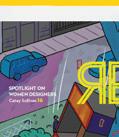
The original sign featured a lone Americana-style eagle and the description “Items of unusual taste”—clues of what awaited visitors that only those in the know would recognize. Inside were things like bongs and motorcycle saddlebags. Just out of view were two cramped offices for tattooing. And even further back was the living area Cooper and Fritch called home.
It wasn’t until the shop was successful enough for them to move to a farm that Cooper expressed an interest in big cats. Fritch doesn’t recall what prompted it, just that Cooper pored over studying how to prepare and what to expect while raising them. Cooper registered for an exhibitor license with the USDA, though he didn’t initially intend for his animals to be public. He built an area for the cats on his rolling property, eventually adopting tigers, lions,
jaguars, and panthers. At times, he had other animals, too, including monkeys, bears, and alligators, but his passion was always big cats.
To this day, he’s haunted by rumors of breeding and selling them, but those closest to him insist this never happened. He was also not licensed for it. He’d tell reporters he had anywhere from 15 to 20 cats, the ones out of view forever “on loan” to others. In truth, the most he ever had at a time was six. These rumors let people believe that not only was he a man who could tame a small army of dangerous animals, but he could also a ord it. And even if he wasn’t breeding or selling cats, didn’t people realize he just as easily could? He was Roy Boy, after all. He could do anything!
During this time, he also taught himself how to take photos and began selling images of his work to biker and nudie magazines. This built a desirability for tattoos and, by extension, himself. Fritch and he discussed expanding into videos. Though she pictured them di erently than what they became, they agreed tattoo culture needed recording. By some estimates, his aggressive visual archives of early tattooing helped open the market for tattoo magazines.
In the early 80s, the couple opened the Badlands on Broadway, the main street of Gary. At the time, Gary had one of the highest murder rates in the country, and Broadway was littered with abandoned storefronts and decaying buildings. When the shop appeared—eventually adopting a yellow facade with murals of tigers and skulls and a sign reading “Welcome to the BADLANDS,” then smaller, “The Land of Shoot ‘Em Up”—it was a tantalizing change, one that positioned the city’s shortcomings as strengths.



Not long after, Fritch and Cooper parted ways. He had taken up with Debra Cooper, who began working in the shop at 16 and became his apprentice, tiger handler, and live-in nanny by 17. At this time, Cooper was nearly twice her age, but to this day, she warmly describes him as her best friend and soulmate—kindred spirits who, over their 15-year marriage, became known as King and Queen of the Badlands.
When Debra met Roy, she was a hard-partying teen. “I was doing bad in school,” she says. “But when I met Roy, my grades raised. I quit drinking and partying. I was a whole new person.” She’s remained that person since, now the owner of the couple’s late son’s shop, also called Roy Boy’s Place. During their romance, Debra and Cooper expressed their inextricable bond through matching blond mullets, head-to-toe tattoos, and eye-catching


outfits in a range of fringe, leather, and animal prints. Chins out, they’d walk tigers on leashes down Broadway together, Gary royalty ready to greet their court.

When Cooper and Fritch separated, he left his cats with her and moved into the second floor of Badlands with Debra. He adopted new cats, moving them into the shop and beginning to photograph and video himself and clients with them. Over the course of ten years, he and Debra released one video a year that blended footage of playing with tigers, getting tattoos and piercings, shooting machine guns, riding motorcycles, and being naked. There were skits and heavy metal songs, many of which Cooper wrote and played himself. In tattooing circles, the videos are highly sought-after memorabilia that capture a bygone era. (Debra still sells them at her shop.)
They also cemented an idea of Cooper, not as a person, but an experience. He wouldn’t come to you. If you wanted that thrill, you had to come to him, in this town everyone else had written o .


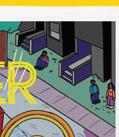
Cooper may have struggled to finish high school, but when he was interested in something, he learned it quickly, then exhausted it. For instance, Cooper taught himself to fly and got his pilot’s license, gradually buying larger planes that were harder to fly including one that read “Larry Flynt for President.” He’d only fly locally, but Debra recalls frequent Chicago flights where they’d get so close to the Sears Tower, she could see the expressions on visitors’ faces. When he got bored of flying, he abandoned it, but it’s easy to see why a person with this kind of drive and exuberance fascinates people. Simultaneously, this quality could be as draining as it was exciting.
“He needed to push life as far as he could to see what its limits were,” Fritch says. “Not what his limits were, what its limits were. He liked to mess with the game.”












Sometimes this included messing with people, too. Don Frey, owner of Bugaboo Tattoo, apprenticed under Cooper and worked at Badlands in the early 90s. He recalls regularly arriving at ten till nine to open the shop, and every so often, Cooper would arrive around 8:30 to turn the clocks forward.



“I’d walk in, and he’d start yelling and cussing at me,” Frey recalls. “‘Shop opens at nine o’clock! Where have you been!’ [It became so routine] I’d say, ‘You know what? I only go by this clock on my wrist, and I’m ten minutes early. I don’t care about your damn clock,


Roy.’”




Nick Colella, owner of Great Lakes Tattoo, recalls Cooper aggressively e-mailing him graphic suicide photos shortly after meeting in the mid-aughts. To him, it felt like a test of what he would put up with. These kinds of antics were common for Cooper—sometimes useful experiments in an industry where it could be hard to identify who was trustworthy. But they also drove many people away, including some very dear to him. Fritch, Debra, and Cooper’s fourth wife, Katie, remember him extremely fondly. But they also confess their truths and desires were not always compatible with their marriages.
“I could be looking at a beige wall, and he would have me convinced it was blue,” Fritch says. But she also cautions that, unlike Joe Exotic, Cooper could rein himself in before things went too far.






When tattooing was legalized in 1997, it was one of Cooper’s biggest fears. (Interestingly, Frey was essential to this legislative change.) He anticipated it as a sign tattoos would become ubiquitous to the point of banal—no longer a visual language for people who, by necessity or choice, colored outside the lines. But this change allowed shops to build niches for di erent approaches—essential to artists like Fritch and Frey, who have built careers on tattooing as an art form. And it mandated safety standards everyone was required to meet. Exotic animals, on the other hand, are still loosely regulated and fringe enough to be appealing to anyone who wants to say both “I’m wild” and “I’m the boss.”



In 1996, Cooper was hospitalized after racing and crashing a dragster outfitted with a jet engine. It left him with a permanent limp and chronic pain later exacerbated by a severe tiger bite. Cooper, who’d avoided all drugs and alcohol since his time in prison, was prescribed painkillers and began self-medicating with other things to manage his discomfort. His health declined, and his behavior became erratic. Every year, taking care of his cats proved more di cult, and in 2010, the USDA rehoused his four remaining tigers, including one he’d adopted from Mike Tyson. Three months later, Cooper died. While it was a confluence of ailments (liver failure, tiger bite, skin cancer), everyone agrees losing his cats contributed.
“He loved his animals,” Debra says. “He really, truly loved them.” And for better or worse, admirers loved him just as much for them. v
14 CHICAGO READER - APRIL 23, 2020 ll
& CULTURE
@miccoslays
Providing arts coverage in Chicago since 1971. www.chicagoreader.com
Polyamory during a pandemic

How to quarantine while dating multiple folks
By S. NICOLE LANE
It’s no surprise that COVID-19 has disrupted our typical dating routines. Forced into isolation with roommates or partners, or on our own, cruising for a fling just isn’t as easy (or recommended) as it once was. On top of casual dating, maintaining nonmonogamous relationships presents challenges for those trying to proceed with their romantic lives.
For many folks, their partnerships are evolving day by day as social distancing shifts to the new normal and shelter-in-place circumstances disrupt poly formations. Polycules, constellations, and networks are all navigating the pandemic in various ways, and each has their own unique set of boundaries.
Navigating a partnership shift this invasive (and global) requires incessant communication. Starting a healthy conversation of limitations, needs, wants, and concerns is imperative when several people are involved. Everyone’s health is at risk when a global pandemic throws a wrench in your dating life. For some polycules, physical touch and intimacy may have to take a back seat for the foreseeable future. This is, of course, a strain on any relationship. Developing a plan is essential when sketching out an idea of what a pandemic polycule will look like. Technology, virtual dates, social media, and video chats are all ways to stay connected and intimate.
Hinge has reported a 30 percent increase in messages from March and Tinder stated that they had the highest number of recorded swipes—more than three billion—on March 29. Being cooped up and isolated is making people horny (or wanting conversation, connection, and intimacy) more than ever. Biological anthropologist Helen Fisher told Time, “Romantic love will never die.” With Zoom, FaceTime, text messaging, and other creative outlets, intimacy in a peculiar time will still be rampant and possible. Apps like Hinge have launched “date-from-home” features, which have made it possible for people to video chat or hop on a phone call instead of meeting IRL.
For poly folks looking to seek out new crushes, this is a cute and accessible way to continue dating (and still stay isolated). However, for folks in long-term partnerships, the pandemic has introduced considerable circumstantial changes.
“I haven’t seen any of my other partners for like four weeks now. We’ve been experimenting with remote dating,” says Dee*, a Skokie resident who has been in polyamorous partnerships on and o for the past seven years. Dating while isolating consists of calls, voice chats (using a program called Discord), movie nights through Netflix Party, and a few dates through Animal Crossing . Dee is currently


APRIL 23, 2020 - CHICAGO READER 15 ARTS & CULTURE
SEX
ARTS & CULTURE

living with her spouse, who is immunocompromised, and because Dee is seeing three other partners, she finds that strictly quarantining themselves has been the best decision. Dee and her partners practice kitchen-table polyamory, which is when all people know one another and are friends with one another. Metamours—a term that refers to your partner’s partner—are all friends when practicing kitchen-table polyamory (the term is inspired by the idea that everyone in the polycule is seated together at a kitchen table). For Dee, this type of practice has been helpful while quarantined. “It’s been nice having my whole polycule as a support network. We’ve all been able to look out for each other and those of us who are healthier/lower risk can shop for each other.”
The New York City Health Department released guidelines on safe sex practices during COVID-19 and recommended that people only have sex with the person that they live with and advised that “you are your safest partner,” which encourages safety and satisfaction through masturbation. With coronavirus spreading through droplets of saliva, poly couples have had to make tough decisions on how to continue their partnerships. For folks who have multiple partners, choosing which partner to quarantine with may be a bit difficult. Balancing emotions, desires, and safe sex during a pandemic can create a fissure in a stable polycule. However, most of the couples I talked with have found that discussing the pandemic as well as safety measures is quite assuring and comforting.
Steven* and Sylvia* have been together for three years and are navigating the pandemic one day at a time. Steven has been with his nesting partner for ten years, and Sylvia, being a solo poly, has been dating a new partner for four months. “When the stay-at-home order came in, my nesting partner and I had a brief discussion that we would still see each other’s partners as long as everyone was comfortable with it and ensure that we would limit as much as possible interactions outside of our ‘pod’ and be safe when doing so,” says Steven.
Steven, his nesting partner, and their metamours are all able to work from home during isolation, but Sylvia is still working some reduced hours. At first, Steven says he had few concerns about seeing Sylvia because she was taking the proper precautions to protect herself. However, after Sylvia listened to a Dan Savage podcast that discussed the topic of dating during a pandemic, she became increasingly concerned. After hearing Savage’s
advice for folks not to see their partners if they don’t live with them, Sylvia’s views on things shifted. Sylvia went from seeing both of her partners regularly, and spending at least two nights a week with each of them, to really limiting her time. Recently, her concern about the situation has begun to increase. “The biggest di culty I have been facing lately is that I am still required to work on-site at my o ce,” she says. “Although we have less than ten people currently working in our o ce, and we are doing everything in our power to keep our workspace and our protocols as safe and clean as possible, I still feel that I act as the biggest threat to my partners’ health as they both work from where they have been sheltering in place for nearly a month.”
For Sylvia, her biggest concern is for others in the polycule who may be affected by the transmission of the virus. “After having many lengthy conversations and despite knowing the risk, both of my partners, in addition to my partner’s live-in partner, have all been adamant that they would still like to see me,” she says. Conversations focused on health, safety, boundaries, desires, and needs have all come to the forefront for Sylvia and her newest partner. To feel more comfortable with the situation, she has decided to reduce the number of days she sees each of her partners and stays on top of handwashing and other safety precautions. For now, Sylvia says she will continue to see her partners until it is no longer possible.
Having lost 75 percent of her income, her mental health has suffered. “My long-term partner has stepped up immensely and has been there for me when I have needed reassurance and emotional support; both he and his live-in partner have been like family to me through this experience, which has brought us all closer together as a network and as friends,” she says. Since the start of the pandemic, Sylvia has deleted OkCupid and has decided to halt all communication with new folks on any dating apps.
Rae McDaniel, a certified sex therapist and founder of Practical Audacity, says that connecting with our loved ones may look di erent during the pandemic, and these “alternative ways of connecting simply may not completely meet your needs. And that’s OK.” They say there should be an acknowledgment “that we are going through collective withdrawal and grief about not being able to be with everyone that we love.” McDaniel says we should acknowledge that we miss someone in this “abnormal time.” McDaniel does note that
the pandemic will likely strain partnerships. “Being forced to isolate from communities of friends and lovers alike can be extremely di cult when community is a main source of connection, meaning, and a feeling of belonging,” they explain.
Separation from other partners can create immense sadness. McDaniel says that sitting with that emotion “while also trying to build [a] connection with the partner in front of you (that you can’t get significant space from for the time being) can put a unique strain on relationships.”

So, what can poly folks do during a pandemic? Although McDaniel isn’t a doctor, they do advise that people try and have a “poly-fidelity” arrangement, which is where poly folks close the loop to their relationship, for the time being. “In the COVID-19 context, I would take this a step further and say to have a closed ‘pandemic polycule,’ where each member of the polycule, including metamours, is only in significant contact with other members of the polycule.”
For folks who can’t isolate together, have no fear. We live in the age of technology. We are devoured by it, and now is the time to take advantage of its resources. “Video calls are a great way to connect, as we’ve all discovered in recent weeks,” says McDaniel. “Socially distant walks can be a nice way to connect and get some fresh air at the same time. There’s also the old-school love letter.” This time can also be used to become more creative in expressing emotions and experimenting sexually. McDaniel suggests sexting, sexy pandemic selfies, and sex toys that can be controlled by remote. “Filling out a Yes/No/Maybe list together can increase the anticipation of a reunion.”
Isolation can be the time for experimentation. Whether that means picking up a paintbrush, starting a new recipe, or finally purchasing that remote sex toy (I personally recommend the Lush 2). While the pandemic creates a difficult constriction for folks who date multiple people, it can also be a time to intimately and emotionally flourish. While every polycule will have a different set of considerations, safety should be pushed to the forefront. “Not seeing a partner is hard, but we all are having to do hard things right now and the reward is not worth the risk to those at high risk of complications from COVID-19,” says McDaniel. As long as doors are open for communication, check-ins, and honesty, this too shall (eventually) pass. v
16 CHICAGO READER - APRIL 23, 2020 ll
@snicolelane in partnership with to add your event to TIXREADER.COM, email mroeder@chicagoreader.com APR. 25 Stir Crazy: The art of the stirred cocktail @ Online, Make & MuddleSAT MAY 9 Head Talks with Shane Mauss & Sophia Rokhlin @ Laugh Factory SAT MAY 9 Marcella Arguello - Early Show @ North BarSAT MAY 9 Marcella Arguello - Late Show @ North BarSAT MAY 2 Shake it Up: The art of the shaken cocktail @ Online, Make & MuddleSAT MAY 9 Porch Pounders cocktail class @ Online, Make & MuddleSAT MAY 16 Summer Slushies: Frozen boozy slushies @ Online, Make & MuddleSAT APR. 30 Literacy & Libations @ Online, Literacy ChicagoTHU MAY 23 Tiki Talk @ Online, Make & MuddleSAT JUNE 6 Naperville Soulfest 2020 @ Naperville SettlementSAT
Quarantine insights
Theatre Y gives viewers a virtual anthology of András Visky’s work.
By ARIEL PARRELLA-AURELI
At the beginning of the year, Theatre Y had big plans to celebrate its upcoming 15-year anniversary. But once the realities of the pandemic set in and shows, tours, and theater festivals were canceled, the company had a clean slate of time and still wanted to celebrate its birthday.
MY BODY’S IMAGE, DELAYED
Through 7/24: new videos released every Friday at 7 PM, theatre-y.com, F
With that time, a new video project was unveiled on April 17 called My Body’s Image, Delayed, responding to the isolation of the current time through experimental movement, poetry, and bathroom mirrors. A new episode by each member will be released every Friday night for the next 15 weeks, directed and produced at a distance by cofounder and artistic director Melissa Lorraine. “We’ve been asked to enter a new kind of silence with ourselves, a kind of cloister,” Lorraine says. “So each episode is going to be a meditation on identity, on mortality, on solitude, on loss, on nonsense.”
The series is the preface to the company’s
anniversary celebrations in the fall, which might be virtual but will honor award-winning Hungarian-Romanian playwright and poet András Visky and the release of his directorial film debut, Performing Juliet. Visky’s play Juliet, based on the story of his mother raising him and his siblings in a prison camp, was the first produced by Theatre Y, which formed specifically to stage his work; they revived it in fall of 2019. With the help of Lorraine and Visky himself, each episode in the series will feature translated poems by the playwright that fit into the themes of introspection, self-interrogation, freedom, and what success means.
Visky is known as a longtime dramaturg, lecturer, playwright, and artistic director, and his plays have been produced in Europe and the U.S. His upbringing also felt timely to highlight: his childhood in a prison camp, his ongoing persecution under the communist dictatorships of Romania and his “Barrack dramaturgy” make him strangely qualified to orient us through the present moment of profound grief and loss of control, Lorraine says. Barrack dramaturgy “was born out of the need to make imprisonment a common experience”
and captivate the audience through modern theater that includes sociopolitical global perspectives, as described in the 2014 book The Routledge Companion to Dramaturgy by theater professor Magda Romanska.
“Now that we are in this period of isolation, choosing from his body of work and sending something out weekly felt even more appropriate because András has a great deal of experience with a crisis of this scale, which most Americans are not professionals at,” Lorraine says.
Visky’s nearly four and a half years in a prison camp from 1960 to 1964 largely shaped his theater work and perception of life. Growing up in eastern Europe in a system of labor camps, his plays center around what it means to be a prisoner and the problem of being set free. He views the current pandemic as a time to reflect on the concept of freedom and how art and culture can help. “This is a very special type of solitary confinement. For me, it’s not that traumatic because I know that all of us will build value and we’ll reconsider the idea of freedom,” Visky says.
As art around the world looks to virtual connections to reinvent itself and stay prominent, he says these challenges present an even greater need to create and find new answers to the new reality we live in. That’s why he was honored to help bring Theatre Y’s new video series to life. While Lorraine is very clear that the series is not theater, Visky looks to it as an experimental minimalist type of theater, an attempt to connect with its community in the best of circumstances.
The retrospective project also came out of an innate need to give purpose to the ensemble members and task them with creativity in a time when many lost their jobs and are just sitting at home. “I did feel a tremendous amount of pressure in this moment to give something to every ensemble member to work on because most of them are in the hospitality industry,” Lorraine says. “And so they are neither doing theater nor bartending or waiting tables, so they’re starving [to create].”
Howard Raik, an ensemble member of almost a year, was the subject of the prologue episode called A Piece for Four Hands with Samuel Beckett by Visky that features quotes from the renowned Irish writer’s plays. It was released April 13, intentionally coinciding with Visky and Beckett’s birthday. Chosen by Lorraine, Raik says the poem was a welcomed
project that let him exercise his performance chops.
Raik, who enjoys reading poetry out loud, says he wrote his own version of the text so he could better resonate with it. He says that the poem speaks to aging, getting older, and wanting to leave a mark on society, which he interprets to mean that Visky wants to be remembered for his work, similar to Beckett. “I, in the poem, felt that I want to leave something behind like those words on the page,” Raik says.
The video purposely creates dissonance between the visual and auditory, which Raik and Lorraine arranged so the audience can think about the work and its multiple interpretations. Lorraine says working with Visky’s words is freeing because of the permission he gives to manipulate this work, which is why Theatre Y keeps circling back to his pieces. She calls his writing naked and vulnerable, while at the same time setting the bar high to produce meaningful work from it.

“There is so much space between his lines, space for you to insert yourself between his words, and that’s why it’s possible to take them out of context and reconfigure meanings inside of little excerpts that maybe are miles away from where they originated, which is fine,” she says.
For Visky, theater is not about the playwright; it is about the actors who reconstruct the unknown from a text, he says. And seeing an anthology of his work produced is a fascinating experiment that makes him forget about the original words he wrote. “I am thrilled to be part of this, watch the videos, and realize that I am getting back a di erent type of text,” he says.
True to Theatre Y’s mission to build community, the company will hold monthly virtual talkbacks as each video is released for the audience to engage with Visky and the ensemble, ask questions, and continue the birthday celebration.
Visky credits Theatre Y for exposing his work to American audiences and theaters. Now he doesn’t feel like an orphaned playwright, he says. In turn, Lorraine feels it is a gift to be working with a living playwright and is confident in her company’s 15-year work. “The task for the company now is to find the Viskys of the rest of the world,” she says. “I am sure they are abundant and grossly underknown.” v
APRIL 23, 2020 - CHICAGO READER 17 THEATER
Still from A Piece for Four Hands with Samuel Beckett COURTESY THEATRE Y
FEATURE
R READER RECOMMENDED b ALL AGES F
@ArielParrella
The Chicago Reader is community-centered and community-supported.






CHICAGO FOR CHICAGOANS
You are at the heart of this newspaper. Founded in 1971, we have always been free, and have always centered Chicago. Help us to continue to curate coverage of the diverse and creative communities of this fabulous city.




Your donation keeps the presses rolling.
IN HERE: www.chicagoreader.com/members
18 CHICAGO READER - APRIL 23, 2020 ll
CHIP
WANT TO DONATE VIA CHECK? Make checks payable to “Chicago Reader” and mail to Chicago Reader, Suite 102, 2930 S. Michigan Avenue, Chicago, IL 60616. Include your mailing address, phone, and email—and please indicate if you are okay with us thanking you by name in the paper.
NOW STREAMING
Earth
It would seem that Austrian documentary filmmaker Nikolaus Geyrhalter (Our Daily Bread, Homo Sapiens) has made a career of honing in on subjects at the core of







our contemporary existential crisis, ranging from industrial food production, the rise of nationalism, and, now, the large-scale desecration of the earth through mining and other disruptive practices. Shot in seven locations across North America and Europe, the film contains astonishing widescreen images of humanity’s impact
on the earth’s topography; Geyrhalter and his crew delve into the nuances of each worksite, where colossal machinery eats away at the land. The filmmakers interview laborers at each location about their work and how they feel about what they’re doing to the planet. These segments are honest and illuminating, specifically with regards to the intersection between labor, capitalism, and environmental concerns. I can’t help but feel there are no easy answers to the complex issues the film raises; if anything, I came away from it with even more questions. In various languages with English subtitles —KATHLEEN SACHS 116 min. Facets Virtual Cinema, Gene Siskel Film Center from Your Sofa
R Love Wedding Repeat




In the latest Netflix rom-com, a genre the streaming service is starting to become an expert in, writer-director Dean Craig (Death at a Funeral, Carrie Pilby) explores how the chaotic randomness of the universe affects the chances of you ending up with the love of your life. It’s not as deep as it sounds—the disembodied voice of the all-knowing Oracle laying
out the concepts uses the word “shitter” in the first five minutes of the film. But it still manages to go beyond just being a frothy, mindless romance, thanks in large part to the exceptionally charming and emotionally adept ensemble—in particular Joel Fry and Aisling Bea as the main sources of comedic relief. The film focuses on Jack (Sam Claflin) who blows his chance to tell Dina (Olivia Munn) how he feels about her. Years later they are reunited at his sister Hayley’s (Eleanor Tomlinson) wedding, but a simple mix-up of the seating chart sends fate spinning in different directions. We get quick glimpses into the other timelines in a particularly delightful montage zooming through how each seating arrangement might end. In a refreshing twist, the final outcome isn’t quite the picture-perfect, predictable rom-com ending.

—BRIANNA WELLEN 100 min. Netflix

R Roar
If there’s one thing to thank Netflix’s Tiger King for, it’s reviving interest in 1981’s Roar. Both so messy as to be compelling, the former is a backstage pass to the bizarre, while the latter is a cult classic with claws. Roar was meant to be the magnum opus of director Noel Marshall (producer of The Exorcist), and to raise

APRIL 23, 2020 - CHICAGO READER 19 FILM
Earth NOW ONLINE!SCHOOL GIRLS; OR, THE AFRICAN MEAN GIRLS PLAY By Jocelyn Bioh, Directed by Lili-Anne Brown Through April 26 only Stream this “nasty-teen comedy, wonderfully refreshed and deepened” (The New York Times) from the comfort of your home! GoodmanTheatre.org/StreamSchoolGirlsMajor Corporate Sponsor Corporate Sponsor Partners
FILM
from 19
awareness about big cat poaching. Ostensibly a film about a Chicago family venturing to East Africa to visit their naturalist father who’s living among a hoard of wild big cats, Roar is actually a clear case against disrupting the animal kingdom on a whim. It notably stars Marshall’s own family, which includes then-wife Tippi Hedren (The Birds) and her teenage daughter Melanie Griffith (Working Girl), both of whom were seriously injured by various wildlife on set. Made for a cool 17 million dollars (only two million of which was earned back), Roar is an inimitable relic, a must-see. —BECCA JAMES PG, 102 min. Music Box Theater Virtual Cinema
R Saint Frances
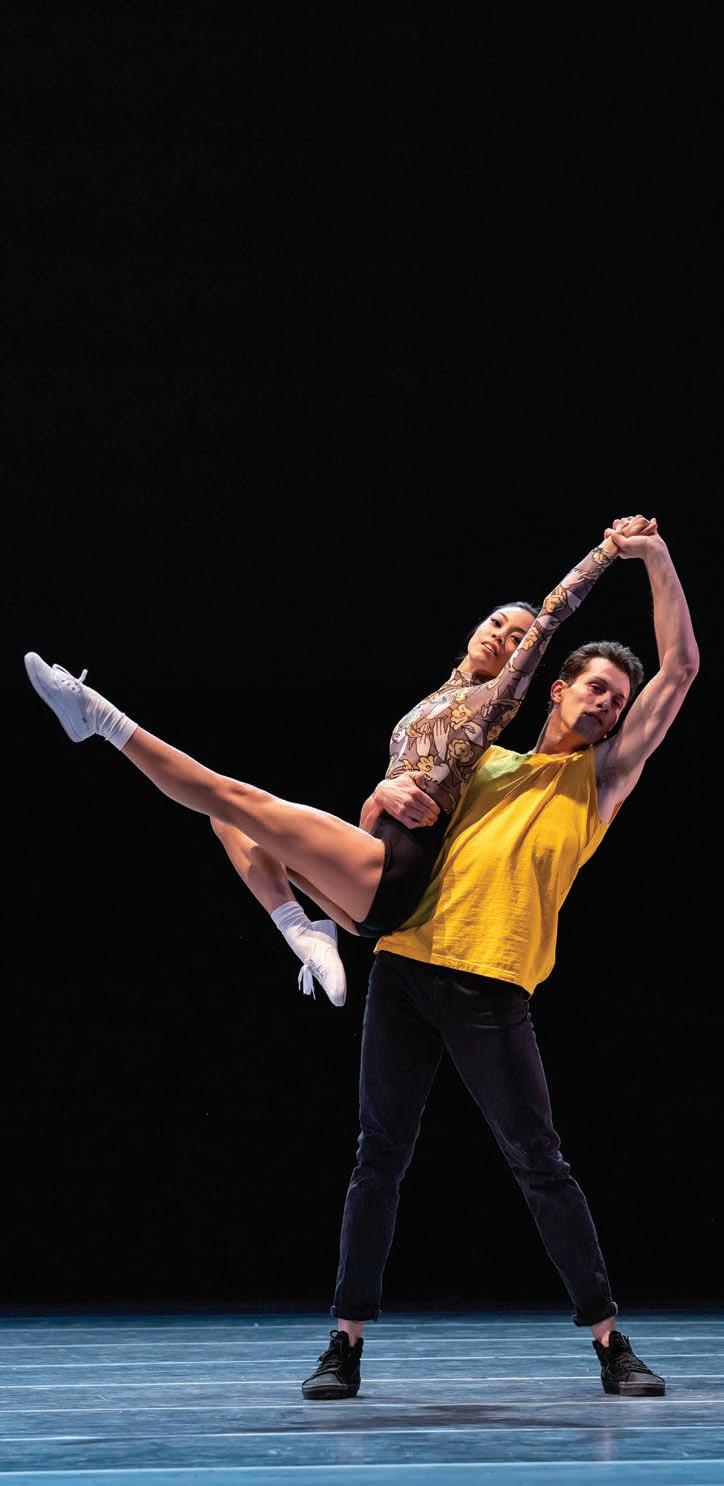
At 34, Bridget (Kelly O’Sullivan) was not expecting to be working minimum wage and sleeping with a man nearly ten years her junior. But sometimes life doesn’t work out like you imagined it. A er landing a much more lucrative job as a nanny to six-year-old Frances (Ramona Edith-Williams), she might finally be on the upswing that gets her life back on track—that is, until an unwanted pregnancy gets in the mix. Bridget carries the weight of her choices while getting closer with Frances— imparting wisdom onto her about the patriarchy and how to rock like Joan Jett—and attempting to impress Frances’s moms when her life feels like a trainwreck. Alex Thompson and O’Sullivan’s Chicago-shot feature Saint Frances examines the intricate, annoying, and less-than-glamorous parts of life with tenderness but never with shame. It champions hard conversations about abortion, postpartum depression, and the all-consuming fear that you messed your life up, and it’s too late to fix it. It asks its characters and its audience to redefine not just what family means, but what it means to have a life worth living, even if you’re not quite there yet. —CODY CORRALL 106 min. Music Box Theatre Virtual Cinema
R Sorry We Missed You
An urgent and heart-rending drama, Ken Loach’s 2019 film follows Ricky (Kris Hitchen), a stoic delivery driver and Abbie (Debbie Honeywood), a home care nurse. Together, they struggle to make ends meet while trying to hold their family together, caring for their sensitive young daughter Liza (Katie Proctor) and rebellious, but ultimately goodhearted, son Seb (Rhys Stone). Unflinchingly frank, this British-French-Belgian film can feel stifling at times because of the many injustices Ricky and his family face. Still, Loach manages to de ly render a tender and complex portrait of the modern working-class family, dealing honestly with the cruelties of the gig economy while still managing to find moments of warmth and laughter in the family’s love for each other. —NINA LI COOMES 101 min. Music Box Theatre Virtual Cinema

True History of the Kelly Gang
Based on Peter Carey’s novel of the same name, True History of the Kelly Gang animates the story of Australian bushranger Ned Kelly (George MacKay) and his team of ragtag bandits during the 1870s. It’s a punk-tinged take on the life of a historical figure that is perhaps more about a myth than a man. With director Justin Kurzel’s (Assassin’s Creed) familiar grime-glazed visuals on full display, the movie is a brutal portrayal of a hard-earned life, bare-knuckle brawls and all. Raised by his mother (Essie Davis), who exudes a feral formidability, before being sold to the notorious bushranger Harry Power (Russell Crowe), Kelly is remembered for challenging an oppressive regime with an unapologetic killing spree. Long shots of barren land and surreal sequences give this dark western a transportive quality, taking viewers back in time—but it also feels like somewhere uniquely imagined as it blurs fact and fiction in one heady experience.
—BECCA JAMES 124 min. In wide release on VOD v
20 CHICAGO READER - APRIL 23, 2020 ll
Sorry We Missed You continued
TO ALL ESSENTIAL WORKERS, THE HEROES OF OUR TIME THANK YOU You Inspire Us.
Joffrey Artists
Jeraldine Mendoza and Dylan Gutierrez. Photo by Cheryl Mann.
Remembering Chicago music champion Christen Thomas
Christen Thomas at Parson’s Community Block and Lawn Party in June 2017. Her friend Alison Green took this photo, and she’s holding Green’s dog Lil Mama. ALISON GREEN

This past November, Thomas traveled to Austin with Richard Vain to perform at the Levitation festival. That set would be her last. She died of cardiac arrest on Monday, April 6, at age 38.
Thomas grew up in Groveland, Massachusetts, a suburb roughly 35 minutes north of Boston. She learned to play piano because her parents had one in the house— even though neither of them could play, they’d bought it at a yard sale before Thomas was born, hoping their kids would make music. Thomas, the first of their two children, turned out to excel at it. She also studied flute, and after a family trip to the UK, she fell in love with pennywhistles. “It became her mission to collect pennywhistles in every key,” says her younger sister, Cathy Shenoy.
Shenoy remembers that when Thomas took music classes in high school, her teacher noticed her knack for picking up new instruments. “Her band director, he was like, ‘Oh, I want to do this song that has French horn,’” she says. “‘Christen, can you learn French horn?’ She would come home from school with a French horn and be like, ‘I’m gonna learn to play this.’”
Thomas went on to teach herself oboe, and after she left Groveland in 1999 to attend Adelphi University on Long Island, she gave cello a shot too.
she quickly ingratiated herself into the small group of marketers who worked with up-andcoming bands. “I always kind of thought that if she worked at a bank, she probably would still be at shows every night,” Wirtz says. “It just happened to be that she was able to make a living o of this world too.” Many of her former Cornerstone colleagues have long since moved into other fields, but Thomas would continue to work in music for the rest of her life.
In fall 2005, Thomas started at Vice Records, where she helped sign Atlanta garage hotshots the Black Lips. As Vice courted the band in 2006, the label booked a handful of shows for them in New York City and flew in Chicago-based garage rockers the Tyrades to open. The two bands were friends, but after Tyrades guitarist Jim “Hollywood” McCann met Thomas, he spent much of the rest of the trip hanging out with her. “She’s super easy to become friends with—it just seemed like she wanted the best for everyone,” McCann says. “You can sense that almost immediately after meeting her.” McCann soon got into the habit of calling Thomas’s o ce after late-night bartending shifts at Delilah’s and leaving silly phone messages in mixed-up Spanish and Italian. She always called back the next day, laughing.
By LEOR GALIL
Christen Thomas’s boisterous laugh could charm everyone in the room—and because she worked in the music industry, she was in a lot of crowded rooms. She made too many friends to count, not just in Chicago but around the world. Within a few months of moving here in 2007 from New York City, where she’d worked for Cornerstone Promotions and Vice Records, she landed a gig in media relations at the Empty Bottle. A few years later she transitioned into the role of talent buyer, and in 2016 she took a similar job with the team at Metro. For a decade, Thomas helped shape
Chicago’s nightlife, booking top-tier touring acts and local talent at the Bottle and bringing eclectic live music, RuPaul’s Drag Race watch parties, and much more to GMan Tavern.
Thomas worked in a field dominated by men, and she tirelessly advocated for marginalized voices in the arts—she knew firsthand what it felt like to be the only woman in the room. She also made herself at home in the boys’ club of rock ’n’ roll, and played in three bands during her years in Chicago: Circles, Storm Clouds, and Richard Vain, which had begun as the solo project of former Ponys front man Jered Gummere.
At Adelphi, Thomas double-majored in English and music—she aspired to become a conductor of Broadway musicals. “There weren’t very many female conductors working on Broadway, and it was her goal to break into that,” Shenoy says. Before she graduated in 2003, Thomas got a taste of that dream career— she apprenticed as a conductor for The Lion King on Broadway. But by then she’d already found another path, while studying abroad in London her junior year. “Her friends she made over there, they went to a lot of live shows— that’s where she got more into punk and rock,” Shenoy says. “That’s when things start to shift more for her, like, ‘OK, well, I know all this stu about music, and I’ve also got this degree in English. Maybe I can work writing about music.’”
Shortly after graduation, Thomas got a job with Cornerstone, an entertainment promotion company that shares ownership with tastemaking music publication the Fader She worked in the marketing department, where she met Danny Wirtz, who’s now vice chairman of the Breakthru Beverage Group in Chicago; with her passion for new music,
In summer 2006, Vice curated the second and last Intonation Festival, which had split o from the Pitchfork festival that year. The Tyrades’ set at Intonation would be their last show, and Thomas flew out for it. “I think the Chicago community really spoke to her in a meaningful way,” Shenoy says.
When Thomas left Vice in late 2007, she felt Chicago calling. “In the middle of shooting the shit on the phone, she was like, ‘Maybe I’ll just move to Chicago,’” McCann says. “I was like, ‘Oh, you 100 percent need to do that right now.’ She’s like, ‘Really?’ I’m like, ‘Yeah, it’ll be great.’” And he was right.
After Thomas settled in Chicago, she briefly worked as a publicist for Pitchfork TV (which launched in April 2008) before being hired by the Empty Bottle. As Wirtz points out, she’d already been part of three outlets that shaped the era’s musical zeitgeist: Vice, Pitchfork, and by extension the Fader. “I don’t think she was defined by those places,” he says. “She contributed to those places, but Christen Thomas was Christen Thomas.”
In early April 2008, Daylight Robbery drummer Jeff Rice met Thomas at a Headache City show at Cobra Lounge, and afterward they went to the Burlington with a couple friends from the gig. Thomas and Rice spent
APRIL 23, 2020 - CHICAGO READER 21 MUSIC
She booked shows for a decade with the Empty Bottle and Metro teams, but that work was just the beginning of the love, joy, and support she showered on the local scene.
the night and the entire next day together. “We never were not an item after that,” Rice says. “We kept it casual for about a week.” By the end of the year, Rice had moved in with Thomas; they married in October 2013.
Shortly after Rice and Thomas started dating, she ran into Pete Toalson at a friend’s backyard barbecue. At the time, he was the Bottle’s program coordinator. “We met, she talked a little bit about her background—she had been working at Vice in New York and was freelance writing,” Toalson says. “At the time, I was looking for some copywriting PR support, so we talked it out a little bit.” Thomas formally interviewed at the Bottle within a couple weeks, and she got the job right away.

Toalson and Thomas worked together closely for about five years. “She quickly became an asset that I couldn’t fathom being without,” Toalson says. “She started helping me doing some of the programming. We both wrote a lot for the website. She would help out anywhere, in any capacity, with anyone on the entire team.”
Thomas also became tight with the Bottle’s floor sta . “She knew that the people actually working on the ground were the ones who made the events happen and who made them enjoyable for the people who go to the Bottle,” Rice says. “It’s the folks who actually check your IDs at the door, pick up the drinks, make sure the bands go on at reasonable times, and that everybody’s safe and taken care of. Those are the important people.” Thomas even helped her future bandmate Jered Gummere get a job behind the bar.
Thomas also found ways to act on her love for music, and for Chicago’s scene specifically,
outside the Bottle. She’d often write band bios and press releases for local musicians—she helped Adam Lukas of Pink Frost through two of the band’s album cycles. He and Thomas became friends, and she became a fixture at Handlebar, where he was working. Every Friday for a decade, Thomas and Rice would convene at Handlebar, usually sitting at the bar; sometimes they’d join Metro talent buyer Joe Carsello and his wife, Casey, who maintained a similar weekly ritual. “It kind of became a weird, like, booking-agent-slash-Friday-night Handlebar thing. It was awesome,” Lukas says. “Just picking out the jams and having fun doing shots.”
Of course, Thomas also kept going to lots of shows around the city, often seeking out local acts—and not just musicians. Jane Beachy, who founded inclusive, queer-friendly weekly performance series Salonathon in 2011, says she met Thomas at a drag show that Salonathon curated for Illinois Humanities (though she’s not sure if they’d already run into each other at the Bottle). Thomas helped out with Salonathon as it grew, and Beachy came to admire her for her down-to-earth spirit and personable approach to her work. “She wanted to know how you were just as much as she wanted to know if you wanted to work on a particular project,” Beachy says. “That made working with her, and being around her, and being friends with her just very easy.”
Beachy also managed gay synth-pop group Baathhaus, then still called Daan. When they opened for Diamond Rings at the Bottle in the early 2010s, they won Thomas over, and after she formally transitioned into Toalson’s role as the Bottle’s talent buyer in 2011, she’d sometimes tap them to open for touring acts. She
gave lots of locals a leg up that way: Lukas says she booked Pink Frost to open shows for A Place to Bury Strangers and Wild Nothing, and she constantly brought in acts that had members working at Handlebar, among them Radar Eyes and the Runnies. She was fond of garage group Outer Minds, thrash deviants Oozing Wound, and psych misfits Rabble Rabble (whose bassist, Matt Ciarleglio, was a Bottle sta er). Thomas loved rock ’n’ roll, especially garage rock, but she knew she couldn’t do her job well by coloring inside those lines—she also liked to bring in New Orleans bounce queen Big Freedia.
Brent Heyl started at the Bottle in 2012, working in tandem with Thomas as a booker. They frequently took work trips to South by Southwest and CMJ, and at the office they spent hours together dealing with the bureaucratic grind of a business where frustrating last-minute cancellations and crises are the norm. “In working with her, the thing that I appreciated the most is she would help remind me of why I got into it in the first place, and what the point of us being here is,” Heyl says. “She was a really big supporter of LGBT rights and community. Her approach to activism and groups was really encouraging.”
At the Bottle, Thomas advocated for queer-friendly programming such as Glitter Creeps, an LGBTQ+ monthly curated by Donnie and Madison Moore of Absolutely Not. And after she started at the GMan in early 2016, she turned her activism up a notch. She became a moderator for the Chicago chapter of Shout Your Abortion, and she helped connect local venues with grassroots organization Good Night Out, which trains sta to respond to and prevent sexual harassment. Her sudden departure from the Bottle—Rice suspects it was related to friction with male managers—was one of a series of developments that encouraged her to think di erently about how to advocate for women in music. As she wrote in an essay for the 2016 book Feminist Advice From the City of Broad Shoulders, “I didn’t need to be and I couldn’t continue being the only girl in the room. There’s more than enough room up here for us.”
But even before she wrote those words, Thomas had been leading by example and inspiring women in Chicago’s arts communities. Johalla Projects founder Anna Cerniglia says that seeing Thomas work in a field dominated
by men helped motivate her in her role as a creative programmer. “Christen was first and foremost a really great feminist and advocator for women, through the Bottle, the Metro, through her social media,” she says. “She constantly supported female-driven projects, no matter what.”
Shortly after Thomas moved to Chicago, McCann was bartending a slow Wednesday night at Delilah’s when an obnoxious patron walked in and, without ending his phone call, leaned over the bar to deliver a one-word order: “Carbomb.” When McCann told Thomas the story, he joked that he’d start calling one of his friends “Carbomb.”
“She goes, ‘Ooooh,’ which was a thing she does,” McCann says. “She’s like, ‘I want to be Carbomb!’” The nickname caught on as easily as Thomas made friends. By 2010, a friend of Thomas and McCann’s from Austin performing as Butcher Bear (his real name is Ben Webster) had released a synth-pop EP called Carbomb Thomas inspired the title track.
“She had a way of making you feel twice as funny or cool as you actually were,” says Sean Tillmann, better known as Har Mar Superstar. Because he’s based in Minnesota, he saw Thomas less frequently than her Chicago crowd did—they’d hang out when he’d play the Bottle on tour, and she’d usually gather their mutual friends to see him. In November 2019, Thomas and Rice watched as Tillmann served as the officiant at the wedding of two of their friends. “I flew in after having no sleep, straight o of tour, and was very nervous about this large role,” he says. “Something about Carbomb being there, just being like, ‘You’re gonna do great, don’t even think about it,’ set me so much ease that I nailed it. I don’t think I would have been that relaxed if I didn’t have her spirit there.”
Thomas had a knack for energizing her friends in their creative pursuits. “One of the things that was really powerful for me was, when I was working for the Reader and trying to figure out if I was a real photographer or not, Christen was always unquestionably like, ‘Oh yeah, you’re killing it,’” says photographer Alison Green. “That’s really powerful coming from her, because she’s not a bullshitter. She’s extremely kind, but part of that kindness is a truly authentic connection—she’ll love you despite your flaws.”
Though she could be relied on to stick up for underdogs and support the people she loved, in her own bands Thomas shied away from the spotlight. “I think Christen was just so immersed in her role as a music promoter, and
22 CHICAGO READER - APRIL 23, 2020 ll
MUSIC
Christen Thomas at Riot Fest 2017 with Metro social media director Brett Crawford (left) and Bloodiest guitarist Tony Lazzara, who’s also head engineer at the Burlington and co-owns Versus Guitars and Audio ALISON GREEN
also had severe anxiety—being onstage playing keyboards was hugely stressful,” Rice says. “But once she got past that, she was very good at it.”

In the early 2010s, guitarist Srini Radhakrishna asked Thomas to join his garage-pop group Circles, which gigged around town and toured the west coast. A couple years later, she started playing with her friends Justin “Lugs” Wettstein and James Deia, who’d been jamming as an outlet for their shared love of punk and posthardcore. “The loose construction of that band was like, ‘Let’s just bring friends in, and it can take whatever shape it will,’” Deia says. Rice had recommended Thomas to Wettstein.
“It felt really good, and it was hitting some touchstones for her as well—we bonded over the Anniversary,” Deia says. “It went from being a one-o collaborative thing to she felt very much at home.” Thomas soon joined the band, which developed a stable five-piece lineup and took the name Storm Clouds.
“It was really ridiculously easy to be in a band with her, the same as it was to be around her,” Wettstein says. “She was a master of relating to people—like, gauging people, figuring them out, and figuring out how she was going to relate to them and build a relationship. So being in a band was no di erent.”
Wettstein and Thomas would continue to play together in Richard Vain, led by Jered Gummere—one of Thomas’s favorite musicians and by then a close friend as well. “I’d been working on songs for a while at home, got bored, and ended up talking to Christen—I was like, ‘I want to add friends, I’m lonely,’” Gummere says. “We practiced and that was it.” The group had great chemistry, even when they had trouble finding the time to rehearse. Gummere says Thomas was the group’s rock.
In late 2018, Richard Vain dropped an album called Night Jammer. “She was super proud of it,” Rice says. “She listened to the mixes over and over again. That was probably the most fulfilling thing for her musically.”
In 2015, Rice and Thomas took their first of three trips to Talkeetna, an inland Alaskan town a couple hours north of Anchorage with a population under 1,000—it may have inspired the fictional Cicely, the setting of 1990s CBS series Northern Exposure. They’d go hiking during the day and spend their evenings at the Fairview Inn. They made their visits outside the usual tourist season, so they mostly ran into townies with blue-collar jobs. “She loved going to a place where it was only industry people,” Rice says. “That entire state is like the first floor of the Empty Bottle.”
MUSIC

Thomas pursued a sprawling variety of interests and obsessions. She loved drag, and after joining the staff at Metro she became a regular at Smart Bar’s Queen! series. She read voraciously, sometimes finishing a book every day; she’d often visit Wettstein at the restaurant where he works, sit at the bar, read a book for a few hours, and chat with him when he had some downtime. When her great-aunt Jan died in late 2015 and her family discovered a cache of letters from a friend dating back to the 1940s, Thomas transcribed every one and tracked down the sender’s family in Vermont. She had a soft spot for Neil Diamond, and managed to convert Rice too. When Diamond played the United Center a few years ago, Wirtz got Thomas and Rice tickets (the Wirtz Corporation is part owner of the arena). “I talked to Je a little about this—for her and Jeff, it was like one of those top-ten moments as a couple,” Wirtz says.
A couple years ago, Thomas began nannying, mostly for friends. Her easy sociability wasn’t confined to people her own age—Green says she could charm old men instantly, and children adored her. Thomas and Rice didn’t plan on having children of their own, but she loved spending time with her friends’ kids, Wirtz’s among them. “It wasn’t babysitting—she always said, ‘I want to hang out with your kids,’” Wirtz says. “I couldn’t think of a better role model—and just an awesome person—to spend time with our two daughters.”
Thomas got especially close to Gummere and Melissa Elias’s seven-year-old daughter, Eloise. “She’s pretty much like family to us,” Gummere says. Thomas relished her role as “cool aunt,” and she’d recently bought Whitney and Warpaint records for Eloise. “Starting her out right with a good record collection,” Gummere says.
Thomas’s enthusiasm could turn just about anyone on to something new. Shenoy remembers that when Thomas was in high school, the two of them went with their mom to see the White Stripes in Providence—and their mom got hooked.
A couple days before Thomas died, when she was hospitalized with a dire prognosis, her mother was talking on the phone with Shenoy and brought up the White Stripes. “She was like, ‘I keep thinking of that Jack White song, “I Just Don’t Know What to Do With Myself,”’”
Shenoy says. “I thought, ‘The fact that my mother is calling on the power of Jack White right now, as we’re grieving and being sad, just speaks volumes to how powerful Christen’s love of music was.’” v

APRIL 23, 2020 - CHICAGO READER 23
@imLeor
Chicago rapper and cult legend Sharkula focuses his
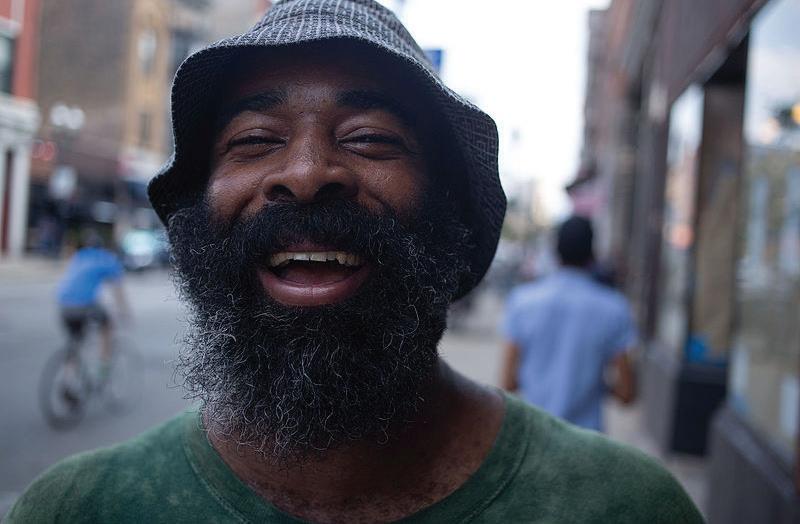
IF YOU’VE SPENT MUCH TIME in Chicago’s artsier north-side enclaves, you’ve likely crossed paths with Chicago rapper Brian Wharton—he goes by Sharkula, but he’s also sometimes known as Thigahmahjiggee. And if you’ve ever talked to him, he’s inevitably tried to sell you something: a homemade CD-R, a T-shirt he’s drawn on with Sharpie markers, or (more frequently these days) a gra ti-indebted painting on canvas or a piece of cardboard. And if like me you devour old-school hip-hop, fringe music of any genre, and artwork by iconoclasts, chances are you at least own a few of those CD-Rs, bought from Sharkula on the sidewalk, on the Blue Line, or in a bar he’s wandered into, selling his wares out of a bag like the Tamale Guy. Sharkula has become such a frequent presence in my everyday life that he defines my picture of Chicago as much as our stalagmite skyline, even as we’re sheltering in place; a couple weeks ago, I ran into him outside the Dill Pickle in Logan Square, where he’d brought his art to sell to the few pedestrians in sight. Thankfully his music is also accessible online, which is all the more important now that the social interactions that typically fuel his sales have temporarily vanished. (On Tuesday, April 14, Natalie Figueroa and Mike “Shazam” Bangles launched a GoFundMe to help Sharkula during the pandemic.) At the end of March, Sharkula released a new full-length, BBQ Fingaprints, on local label Static Switch. Sharkula famously colors outside the lines in his songs, with non sequiturs that sometimes clash with his beats and a flow that sometimes departs from logic, but on BBQ Fingaprints his freeassociative raps are a little easier to follow than usual—and as



as ever.

24 CHICAGO READER - APRIL 23, 2020 ll
charming
—LEOR GALIL Sharkula, BBQ Fingaprints Static Switch staticswitchrecords.bandcamp.com/album/bbq-fingaprints PICK OF THE WEEK
flow on BBQ Fingaprints Recommended and notable releases and critics’ insights for the week of April 23MUSIC
VICTOR
GRIGAS See you on the other side, Chicago. chicagodancesupply.com Rattleback RECORDS ANDERSONVILLE'S FULL SERVICE RECORD STORE WE WANT TO WISH YOU ALL HEALTH & PEACE DURING THESE CHALLENGING TIMES WHILE OUR SHOP IS TEMPORARILY CLOSED WE’RE HAPPY TO SHIP YOU ANY MUSIC YOU’RE LOOKING FOR! www.rattlebackrecords.com
Gerald Cleaver, Signs
577 Records

577records.bandcamp.com/album/signs

Drummer Gerald Cleaver has explored the edges of jazz in a career that’s already stretched over more than four decades. On last year’s What Is to Be Done (Clean Feed) he joined saxophonist Larry Ochs and Wilco guitarist Nels Cline for a set that swayed and jerked about in the space between free playing, ambience, and balladry. But his latest album, Signs (577 Records), is probably his most adventurous to date, as he abandons drums altogether and turns instead to electronic composition. The record is inspired in part by the Detroit techno and electronica Cleaver heard in his hometown during the 80s and 90s, but you can hear fusions that echo electric-era Miles Davis or thirdstream music in the spaced-out ambience and Herbie Hancock-like keyboards of “Tomasz.” Parallels with brainy glitchtronica artists such as Squarepusher and Aphex Twin emerge as Cleaver turns wind-chime sounds into ear-piercing spikes on “Blown” or layers pristine blips over squeaky dooropening sounds and spliced funk to create the lurching beats of “Jackie’s Smiles.” Cleaver has an idiosyncratic sense of structure and fun, and while Signs isn’t jazz, it’s filled with an improviser’s joy at discovering new sounds and new possibilities.
—NOAH BERLATSKY
Dua Lipa, Future Nostalgia Warner dualipa.com
British singer Dua Lipa released her second album, Future Nostalgia, on March 27—a week earlier than she originally planned, but right on schedule to give the world a much-needed dose of bubblegum poptimism. The title track opens with a promise: “You want a timeless track, I want to change the game.” From there, the album’s 11 songs blend disco beats and 80s synths in a throwback sound that channels late-night dance clubs and Jazzercise classes. Lipa intended Future Nostalgia to soundtrack a springtime when people could bop with friends at clubs and house parties, instead of alone in their living rooms—but while these dance tracks feel a little discordant with our cooped-up reality, the album’s title feels almost prophetic. Who knows what we’ll feel nostalgic for in the coming days? Throughout Lipa’s career, she’s displayed an effortless cool, and with Future Nostalgia she takes another step toward becoming a top- tier pop star. “Don’t show up, don’t come out, don’t start caring about me now,” she sings to a salty ex-lover on nu-disco lead single “Don’t Start Now,” which dropped last fall and peaked at number two on the Billboard Hot 100. Six months a er its release, the lyrics seem to be directed at all of us.
—MEGAN KIRBY
Feminazgûl, No Dawn for Men Birds Before the Storm feminazgul.bandcamp.com/album/no-dawn-formen
Margaret Killjoy, the self-described “mistressmind” of North Carolina–based Feminazgûl, announced on March 16 via Facebook that due to the

MUSIC









pandemic-slash-shitstorm, her atmospheric blackmetal band would release their first full-length, No Dawn for Men , ahead of schedule and make it available for purchase on a pay-what-you-can basis. Killjoy, a trans woman, also writes queer anarchist steampunk and folk horror, which helped Feminazgûl’s debut EP, 2018’s The Age of Men Is Over , make big ripples in subcultures beyond the metal scene. The themes she explores in her prose o en bleed into her songs; the new album’s monumental “Bury the Antlers With the Stag” reminds me of her 2017 novella, The Lamb Will Slaughter the Lion , in which a rural squatters’ commune is terrorized by a vengeful spirit in the shape of a stag with three antlers. Though Killjoy made The Age of Men as a solo endeavor, on No Dawn for Men the Feminazgûl lineup includes lead vocalist Laura Beach and California-based violinist and theremin player Meredith Yayanos—and the fleshed-out instrumentation lends an ethereal dimension to the hair- raisingly shamanic “The Rot in the Fields Is Holy.” Killjoy enjoys playfully appropriating quotes and imagery from mythology and classic fantasy to flavor her anti-patriarchal, anarchist message—both of her album titles are quotes from The Lord of the Rings, and the band name of course riffs on the word for the Ringwraiths in the Black Speech. On No Dawn for Men she deals with vengeance, defiance, the ascension of nature, and the acceptance of death: opening track “Ill, Mother of Death” begins with a pastoral idyll and turns into a Maenad-mad invocation of a death goddess. Lovely instrumental “Look Not to Erebor” provides an eerie and melancholy respite a er the renouncing fury of “Forgiver, I Am Not Yours.” This is a rich and unsettling album, full of horror and beauty, and I’m going to be revisiting it a lot. Killjoy also expresses her worldview through other musical endeavors, making neofolk as Alsarath (the EP Come to Daggers dropped in January), blackened doom as Vulgarite (the EP Fear Not the Dark nor the Sun’s Return came out the same month), and electronica as Nomadic War Machine (the track “The Flood Came Over Me” arrived in March). Killjoy has a methodical bent to her prolificacy; she sorts and organizes the different aspects of her creativity into categories, and uses varying sounds to conjure varying energies. As in her work as an author, she tailors the style of her prose to the vibe of the story at hand.
—MONICA KENDRICK








 Jackie Lynne, Jacqueline Drag City
jackielynn.bandcamp.com/album/jacqueline
Jackie Lynne, Jacqueline Drag City
jackielynn.bandcamp.com/album/jacqueline
A few years ago, Haley Fohr, who makes experimental rock music under the name Circuit des Yeux, introduced a new project where she inhabited a dri er-turned-drug-pusher alter ego named Jackie Lynn. Her 2016 album under that name mixed dejected pop and stripped-down electronics with off-kilter alt-country; its second half in particular had a mysterious, dangerous vibe, and listening to it felt like picking up a hitchhiker on a deserted highway not knowing whether they were harmless or a serial killer. So when I heard that Fohr was releasing a second Jackie Lynn album, I imagined that her musical antiheroine’s latest adventures would have taken her further down the rabbit hole of darkness. Instead, the record feels brighter than its prede-
https://www.gofundme.com/f/chop-shop-virtual-beats-amp-eats




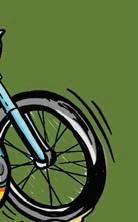
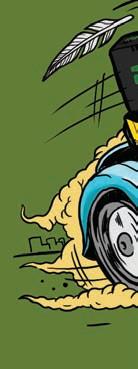






APRIL 23, 2020 - CHICAGO READER 25
b ALL AGES F
BIT.LY/GOOSEDELIVERS
cessor, even a little glamorous—an about-face that’s even implied in the more genteel spelling of her name, Jacqueline . Much of this has to do with the fact that Fohr has expanded the project into a full band with help from Bitchin Bajas members Cooper Crain, Rob Frye, and Dan Quinlivan. Opening track “Casino Queen” immediately plucks the Jackie Lynn of yesterday from her smoky backroom poker games and drops her among the red-velvet ropes and twinkling lights of Vegas, while other songs lack any tinge of society’s underbelly: the orchestral “Dream St.” feels more like floating down a river than flirting with trouble, and the hook-laden “Shugar Water” is practically upli ing. Fohr has described Jackie Lynn as a long-haul truck driver in this chapter of her story, and each song is a snapshot of a day in her life. So while the darkness may return down the line, this independence and freedom suit her well.
—JAMIE LUDWIG


Pigs Pigs Pigs Pigs Pigs Pigs Pigs, Viscerals
Rocket Recordings pigspigspigspigspigspigspigs.bandcamp.com/ album/viscerals

It may be a while before the sort of all-out raging rock show that’s so hot and packed you leave smelling like other people’s sweat is once again part of human existence, but Newcastle Upon Tyne fivepiece Pigs Pigs Pigs Pigs Pigs Pigs Pigs (or, more concisely, Pigs x 7) won’t let that feeling fade into memory without a fight. Formed in 2013, they mix heavy rock, metallic riffs, and a little spacey psych with ample amounts of weirdness and fun—they’re the sort of band you wish were a regular presence on your local circuit, whether you ordinarily listen to their style of music or not. The title of Pigs x 7’s new third album, Viscerals, feels like the perfect choice. Right from the opening track, “Reducer,” which is anchored by a blistering, Stooges-worthy groove and searing lead guitar, the record sounds so raw
you can practically smell the grimy clubs and basements that normally host this sort of band, and its sky-high energy level can make the walls of wherever you’re self-quarantining feel infinitely more confining—and here, that’s a good problem to have. The hard-rock chorus of the anthemic “Crazy in Blood” practically demands cheap beer and a cheesy music video, but the punk-addled vision of Pigs x 7 makes it feel like a deliberate goof rather than self-satire. Things also get a little absurd on “Blood and Butter,” a horror story of social anxiety and well-mannered poisoning that’s mostly spoken word, drums, and reverberating rumbles. The album isn’t all overthe-top silliness, though: Pigs x 7 get more complex on long-form burner “Halloween Bolson.” So what if you can’t go out? Crank up Viscerals (on headphones if necessary), and try not to bash your head against the ceiling as you let off some pent-up energy. —JAMIE LUDWIG
Lido Pimienta, Miss Colombia Antilidopimienta.bandcamp.com/album/misscolombia
Contemporary music informed by cultural traditions that have withstood the test of centuries upli s my spirits like nothing else; in these times, it seems to hold a magic that can help us all withstand adversity. Lido Pimienta’s new third album, Miss Colombia, is the highly anticipated follow-up to her Polaris Prize–winning La Papessa. The Barranquilla-born, Toronto-based Afro- Indigenous multimedia artist recorded the album in her home studio as well as in San Basilio de Palenque, a Colombian village founded in the 17th century by escaped enslaved persons. On Miss Colombia Pimienta further evolves the hybrid electronic and Afro-Indigenous sound she established on La Papessa and 2010’s Color, but she takes a more organic and sensual approach to electronics, surrounding her vocals with lush, rounded effects and beats. Her soaring vocals, which are front and center here, are grounded in
26 CHICAGO READER - APRIL 23, 2020 ll
Pigs Pigs Pigs Pigs Pigs Pigs Pigs COURTESY THE ARTIST continued from 25 MUSIC Find more music reviews at chicagoreader.com/soundboard Whitney Wasson Instagram: @soberrabbit Twitter:@boozetornado • Website:thewhitneywasson.com 22 ChicagoReaderColoringBook Proceeds will be split between the Reader and the more than 50 artists who contributed illustrations. $30 for PDF download $45 for limited edition printed book and PDF download Or send checks to: Chicago Reader Suite 102 2930 S. Michigan Avenue Chicago, Illinois 60616 For copies of this book, either in PDF form or as a printed book, see: chicagoreader.com/coloringbook Provide your name and mailing address and say this is for a coloring book on the memo line.
MUSIC
Stay Home. Stay Positive. Stay Connected.
the ecstatic chanting of Afro-Colombian spiritual music as well as references to Caribbean Colombia’s musical traditions, including horn-rich cumbia subgenre porro and the percussion-centered bullerengue —a precursor to cumbia born in San Basilio de Palenque and traditionally danced only by women. To perform her compositions, Pimienta has enlisted Cuban-Colombian jazz band Okan, members of San Basilio de Palenque’s famed Sexteto Tabala, female singers from Cantaoras Grupo Raíces de Palenque, the Road to Avonlea Choir, and front woman Li Saumet of punk cumbia act Bomba Estereo. “Eso que Tú Haces” (“That Thing You Do”) features porro-infused beats that swell majestically amid swirling, lush, orchestral horns. “Pelo Cucu” is a slow, mournful bullerengue that celebrates the African texture of the singer’s hair and defends it against unwanted touching. Pimienta makes music that offers the promise of overcoming struggle. The lyrics to “Resisto y Ya” make me feel especially hopeful: the lines “Nunca se acaba la luz de lo que vuelve . . . en la luz, resisto, y ya” translate to “The light of what returns never ends . . . in the light, I resist, and that’s it.” I’ve had that track on repeat, so I can savor how its chants and percussion seamlessly veer into an electro-bullerengue pop bop blessed with a sunny, supremely danceable groove.
—CATALINA MARIA JOHNSON
Serengeti, Ajai Cohn Corporation kennydennis.bandcamp.com/album/ajai
In the mid-2000s, local rapper Serengeti imagined rapping as a character named Kenny Dennis, a 50-something with a thick mustache and an even thicker Chicago accent. Ever since Kenny made his debut on the 2006 single “Dennehy,” he’s become the protagonist of a sprawling universe spread out among a panoply of albums, some credited to Serengeti and others supposedly made by figures in Kenny’s fictitious universe. In 2010, for example, Serengeti dropped There’s a Situation on the
Homefront by Kenny’s golden-age group, Tha Grimm Teachaz, who were supposedly all set to release music on Jive during their early-90s heyday, only to have their recordings shelved after they beefed with Shaq at a label showcase. Thankfully, Kenny’s younger brother, Tanya, rediscovered the Homefront tapes nearly two decades later. Chopped Herring, a very real UK archival label that specializes in reissuing obscure hip-hop, is one of several imprints that played along with Serengeti to release Tha Grimm Teachaz material as a “reissue” in the 2010s, which demonstrates the lengths to which he’s gone to make Kenny’s world feel as genuine as our own. In 2018, Serengeti decided to wrap up Kenny’s story with 6e, in which the everyman Chicagoan mourned the loss of his wife, Jueles (she has an album too: 2017’s Butterflies). But Kenny wasn’t done with Serengeti. Last fall the Bulls commissioned Serengeti to make a remix of “Dennehy,” and just before Governor Pritzker issued the shelter-in-place order in March, Serengeti performed the song during halftime at a Bulls home game. Then one week into self-isolation, Serengeti wrote and recorded an epilogue to Kenny’s story, Ajai (released on his own Cohn Corporation label).
Produced entirely by Los Angeles beat maker Kenny Segal, the album is front-loaded with densely detailed tales about a new character, the titular Ajai, a maladjusted hypebeast whose single-minded fashion addiction colors every facet of his life.

Serengeti’s reflective performances and comforting vocals lend his immersive storytelling real-life gravitas and impart nuance to scenarios that otherwise might just feel sad. Though Ajai and Kenny Dennis are basically strangers, they exist in a world Serengeti has spent nearly 15 years animating down to the last particular. Near the end of the album, when Kenny receives some clothes from Ajai, the gesture carries the weight of Serengeti’s long songwriting journey—practically a lifetime—even though the fleeting moment is mostly transactional. Ajai makes me even more excited to see where Serengeti goes next with his idiosyncratic narrative raps.
We can’t wait to get back to making music and dancing together at the Old Town School!
In the meantime, many of our classes are currently running online, and we are actively working on more ways to keep you making music and learning new things with us, from home, in the near future.

We are so thankful to be part of the wonderful and supportive arts community in Chicago and are especially thankful for all our dedicated students and teaching artists persevering with us during this time.
For updates, rescheduled concert info, ways to help support our staff & more please visit oldtownschool.org/alert
Stay safe, sane, and keep on playing from all of us at Old Town School of Folk Music!
APRIL 23, 2020 - CHICAGO READER 27
—LEOR GALIL v
Lido Pimienta DANIELLA MURILLO
oldtownschool.org
The Ashby Ostermann Alliance have a second album after 37 years
One of the hardest-gigging groups in the city’s early-80s jazz-fusion scene reunited in 2016.
By STEVE KRAKOW
My favorite way to discover an obscure Chicago band is to stumble upon a release I hadn’t known existed at a thrift shop or record store, then research the artist—and if I can, I contact them to get the full story. I did all three to learn about uber-musicianly jazz-fusion group the Ashby Ostermann Alliance, whose 1979 demo cassette I found at the Village Discount on Western and Milwaukee. (It’s my most-visited thrift store in the city, since it’s closest to my pad of many years—I’ve missed it during the stay-at-home order!) Upon investigation, I was happy to find that the boys had recently re-formed, cut a reunion album, and put up a website—and I was bemused to hear that they barely recall the existence of this demo.
Keyboardist and horn player Dennis Ostermann was born in Chicago in 1951 and raised in Brookfield and Lombard. The band’s other
namesake, guitarist Vince Ashby, was born in Charleston, Illinois, in 1957. Ostermann started on piano at ten, though at that age he was mostly studying French horn, and Ashby began piano lessons at five, switching to guitar at 13. Between them they loved classical music, complex rock (Deep Purple, Brian Auger, Keith Emerson’s bands), and jazz-inflected crossover groups (Return to Forever, the Mahavishnu Orchestra). They met through Ashby’s brother Kevin while Ostermann was attending Eastern Illinois University in Charleston and performing with his group MotherFox. “I remember the first time I met Vince—he had a Sunn Sceptre with a sunburst Les Paul in an old dirty barn pointing west, blowing out decibels that were entertaining to the neighbors two or three miles away,” says Ostermann. “I thought it was going to be something interesting, and it was.”
The Ashby Ostermann Alliance began in
1977 with a jam session in that barn in Charleston that included Ashby, Ostermann, bassist John D’Arco, and drummer Bubba Bryant (who left before the group started gigging). The tunes “Nightstorm” and “Universal Melody” began to take shape there, and late that year Ashby moved to Chicago to pursue the group. Cicero native Jim Massoth, who’d been playing saxophone with pianist Marshall Vente, was also in Ostermann’s group Jazmin, and Ostermann introduced him to Ashby. Musically the band began to jell, but the lineup was still unstable. D’Arco played only a couple gigs before moving on—they had to audition several bassists before finding Indianapolis native J.T. Bromley in late ’78.
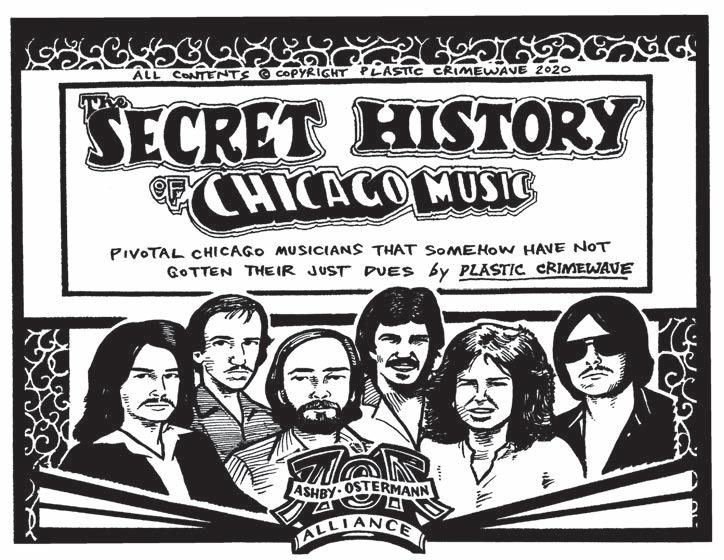
Ashby, Ostermann, Massoth, and Bromley became the core of the AOA, which went through drummers the way Spinal Tap went through keyboardists (and drummers, come to think of it). Eventually Ostermann found the bright side in the situation, deciding that the constant turnover “kept things fresh”—he didn’t have much choice, since in their sevenyear original run AOA had at least a dozen different drummers (including acclaimed jazzman Paul Wertico, before his 17-year stint in the Pat Metheny Group). Their first proper gig was in a coffeehouse at the College of DuPage, where they shared the bill with Jim Belushi. Early in their history, they also played other universities, including Morton College in Cicero and Trine University in Angola, Indiana, as well as more conventional music venues such as B’Ginnings (in Schaumburg), Kimball Street Bridge Club (in Elgin), and famous Chicago reggae hotspot the Wild Hare & Singing Armadillo Frog Sanctuary. (I’d never known the Wild Hare’s whole handle till now, and it might be the best venue name I’ve ever heard.)
In 1980 the AOA secured management from Diane Daniel, and they started gigging much more frequently, at Chicago clubs (Tuts, Wise Fools Pub, On Broadway, Biddy Mulligan’s) and all over the suburbs and beyond (Harry Hope’s in Cary, the Uprising in Dekalb, Durty Nellie’s in Palatine, the Great Escape in Carbondale, Crows Mill School in Springfield, Charlotte’s Web in Rockford, and many more). The AOA never strayed far from their home base in Chicago, but they pummeled the local college circuit too, playing the likes of Northwestern University, McHenry Junior College, Harper Community College, UIUC, and Northern Illinois University. They got booked twice for ChicagoFest, first in 1981 (Ashby says they almost got cited for inciting a riot when they attempted an encore) and again in ’82 (sharing the bill
with Tito Puente). They also hit Summerfest in 1982 and ’83, Waukegan Fest in ’82 and ’83, and the Festival of Lights in Aurora in ’82.
The AOA recorded the 1979 demo at a studio in Lombard whose name they no longer remember, and on December 8, 1980—the day John Lennon was shot and killed—they started sessions for what till recently was their only album. They tracked the self-titled LP (released on their own Divide label, whose name combined letters of Ashby, Ostermann, and Daniel’s first names) in three days for around $1,800 at Hedden West in Schaumburg with legendary producer Iain Burgess. At that point, their drummer was Ty von Jenef, who’s since passed away.
Both the demo I have and the self-titled 1981 LP feature versions of the the spacey, near-psychedelic “Mongol Sunrise” and the complex pieces “Nightstorm” and “Tidebreaker”—which show off Ashby’s sick tone and virtuosic playing and Ostermann’s serious jazz chops. The Windy City had a vibrant jazz-fusion scene in the 70s and early 80s, with the likes of Streetdancer and Proteus (the AOA gigged with the latter, and both have been SHoCM subjects over the years). The Ashby Ostermann Alliance led the pack, in this writer’s opinion, but by 1984 the group were all but done. “Things began to die down, lives change,” says Ostermann. The members soon “decided to pursue other interests.”
Massoth now produces and engineers at Crystall Recorders Studios in Lombard, and he’s still active on the Windy City music scene. Ostermann went on to perform with Juggular, and in 2013 he produced a CD with his band Brailledog in 2013 (Bromley appears on the album, as does present-day AOA drummer Scott Kohler). Currently he’s mostly a church musician and records with his group the Gojo Ensemble. In 1985 Ashby produced an EP called Hollywood Remains , and in 2009 he released the country-rock CD Kinda Sorta Maybe under the name Buck Buick & the Wildcats. In 2016, with the 40th anniversary of the AOA’s formation coming up, he was inspired to get the group back together for a reunion, and after the four original core members recruited Kohler to drum, they recorded new and previously unreleased tunes from their heyday at Ostermann’s studio in Batavia. That material is collected on the 2018 album Unfinished Business, released on the band’s own And Conquer label, the successor to Divide (get it?). The AOA sound like they’ve picked right up where their debut record left o 37 years ago, so this SHoCM tale has a happy ending! v
28 CHICAGO READER - APRIL 23, 2020 ll MUSIC
EARLY WARNINGS
WOLF
IN 2012, GOSSIP WOLF reported on a 2009 supersession involving Chicago cosmic garage band Disappears (at the time singer-guitarist Brian Case, guitarist Jonathan van Herik, bassist Damon Carruesco, and drummer Graeme Gibson), noisy drone duo White/Light (guitarist Matt Clark and electronicist Jeremy Lemos), and Sonic Youth drummer Steve Shelley. The resulting recording was tentatively scheduled for release on Shelley’s Vampire Blues label in fall 2012—which turned out to be off by about eight years. This week, Vampire Blues finally dropped the self- titled album, mixed by John Congleton , via Bandcamp. Its double- drummer drone improvisations and thumping space punk a la Spacemen 3 o en swing with a heavy dub sound that foreshadows Disappears’ evolution into Facs.
Gossip Wolf last heard from electronicpop trio Weatherman when they released a charmingly intimate self-titled EP in 2017. Drummer Jason Toth says that two and a half years ago, he and singer-keyboardist Annie Higgins left Chicago for a “tiny medieval village” in France, where they’re “recording and releasing new music under Annie’s name as AM Higgins.” Last week, they dropped the ruminative “Who Can Say?” on Soundcloud—it features former Weatherman bandmate Joshua Dumas on keyboards plus bass and vibraphone from Casey Foubert, who’s recorded with Pedro the Lion and Su an Stevens.
Chicago electronic producer Sam Bik charmed Gossip Wolf last year with his debut 12-inch as Ahero , Ultima Flux , on his own Faceway label—its lively, cinematic sound blends ghostly vaporwave sonics and go-for-broke synth-pop hooks. Since then he’s dropped another Ahero album (February’s Spirit) and used the alias Talk to Me to release relatively straightforward retro-pop songs. On Monday, Talk to Me put out the dazzling full-length Drop Shadows, whose exultant single “Kingdom Come” should be on everybody’s playlists.
—J.R. NELSON AND LEOR GALIL
Got a tip? Tweet @Gossip_Wolf or e-mail gossipwolf@chicagoreader.com.

NEW Peter Bradley Adams 8/21, 7 PM, SPACE, Evanston b Aether Realm, Paladin, Axxios, Munition 7/13, 7 PM, Reggies’ Music Joint Backseat Lovers 8/25, 7:30 PM, Schubas b Born Under Punchlines: a Musical Comedy Showcase featuring Amber Autry, BJ Party, Springbo, John Randall 9/7, 8:30 PM, GMan Tavern Brook & the Bluff 5/29, 9 PM, Lincoln Hall, 18+ Cash & Maverick, Alli Haber, Savannah Maddison 6/28, 7 PM, Wire, Berwyn b Roger Clyne & the Peacemakers 6/28, 8 PM, Lincoln Hall Coronas 11/14, 8 PM, Beat Kitchen, 17+ Cowboy Mouth 7/25, 8:30 PM, SPACE, Evanston b Cub Sport 6/13, 8 PM, Schubas b
Dog Fashion Disco, Ideamen, Beneath the Hollow 10/21, 8 PM, Beat Kitchen Dwayne Dopsie & the Zydeco Hellraisers 8/19, 6 PM, Harris Theater b Dreary North Fest featuring Bastard Noise, Midwestlust, Sea of Shit, Deathrun, Pat Peltier, Dipt, Sarin, Rush Falknor, Shrivel Up, Magical Mind, Livid, Democide 8/22, 3 PM, Subterranean, 17+ Eddie From Ohio 9/20, 8 PM, City Winery b Linda Eder 10/16, 8 PM, North Shore Center for the Performing Arts, Skokie b John Elefante, Fran Cosmo 8/21, 8 PM, Arcada Theatre, Saint Charles b Rick Estrin & the Nightcats 8/7, 8 PM, SPACE, Evanston b
Fauvely, Superknova, Engine Summer 5/28, 9 PM, Emporium Wicker Park F
Fleetmac Wood presents Rumours Rave with DJ Roxanne Roll, DJ Smooth Sailing 6/13, 9 PM, Chop Shop Sonny Fodera, Dom Dolla 11/5, 8:30 PM, Concord Music Hall, 18+
Steve Forbert 6/5, 8:30 PM, FitzGerald’s, Berwyn Freddy Jones Band 9/17, 8 PM, SPACE, Evanston b Frights, Happy Fits 7/25, 7:30 PM, Bottom Lounge b Gogo Penguin 2/12-2/13/21, 8:30 PM, Constellation, 18+ Good Life 7/5, 9 PM, Sleeping Village
Joe Hertler & the Rainbow Seekers, Alabaster 7/10, 8 PM, Cubby Bear Homesick 8/16, 8 PM, Beat Kitchen
Jenny Hval 9/10, 8 and 10:30 PM, Constellation, 18+ I_o 8/15, 9 PM, Concord Music Hall, 18+
Elton John 6/19-6/20, 8 PM, United Center b Juice 8/13, 8 PM, Subterranean, 18+
Loose Ends 9/7, 5 and 8 PM, City Winery b Luh Kel 7/24, 7 PM, Avondale Music Hall b Jessica Lynn 10/9, 7 PM, Avondale Music Hall b Bruno Major 10/5, 6 PM, Concord Music Hall b Matis Trio featuring Matisyahu 8/2-8/4, 8 PM, City Winery b Michael McDermott 6/5, 8 PM, City Winery b Memba 10/17, 9 PM, Chop Shop, 18+ Mewithoutyou, Slow Mass 7/21, 8 PM, Subterranean, 17+ Mighty Mystic 6/4, 8 PM, Wild Hare
Amanda Miguel & Diego Verdaguer 11/7, 8 PM, Rosemont
Theatre, Rosemont b Mucca Pazza 5/15, 7:30 PM, Wire, Berwyn, 18+ Peter Mulvey, Anna Vogelzang 9/13, 8 PM, SPACE, Evanston b NB Ridaz, Lil Rob, MC Magic, Karlaaa 8/28, 7 PM, the Vic b Nella 10/7, 8 PM, City Winery b 99 Neighbors 6/26, 8 PM, Schubas b Nowhere FM, Lotus Kid, Blind Adam & the Federal League, Butchered 9/26, 8 PM, GMan Tavern Ocean Alley 6/25, 8 PM, Lincoln Hall, 18+ Oso Oso, Prince Daddy & the Hyena, Just Friends 6/10, 7 PM, Bottom Lounge, 17+ Passafire, Roger This, Piece of Cake 6/19, 8 PM, Subterranean, 17+ Rahsaan Patterson 10/2, 7 and 10 PM, City Winery b Jeff Pianki, 1815, Jessica Mindrum 7/24, 8 PM, Schubas Polaris 8/7, 9 PM, Lincoln Hall Polonia Top Star Disco Festival featuring Milypan, Daj To Głośniej, Łobuzy, Ronnie Ferrari 10/23, 8 PM, Copernicus Center b John Primer & the Real Deal Blues Band 6/5-6/6, 9:30 PM, Rosa’s Lounge R.A.P. Ferreira 6/13, 8 PM, Subterranean, 17+ Jon Rarick’s Nova Continuum, Gome’s Dome 6/1, 9 PM, Elastic b Ike Reilly 11/28, 8 PM, SPACE, Evanston b Rico 6/4, 10:30 PM, Wild Hare San Cisco 7/1, 8:30 PM, Lincoln Hall, 18+ Satsang 9/12, 8 PM, Martyrs’ Shoffy, Ryann 7/22, 8 PM, Schubas, 18+ Cassidy Stirtz, Lunar Ticks, Winchesters 7/13, 8 PM, Martyrs’
Denise Thimes Quartet 7/308/1, 8 and 10 PM; 8/2, 4, 8 and 10 PM, Jazz Showcase b .38 Special 9/25, 8 PM, Arcada Theatre, Saint Charles b Three Bad Jacks, Bama Lamas 6/27, 7 PM, Reggies’ Music Joint
Toubab Krewe, Afrozep 10/24, 9 PM, Martyrs’
Tribute to Donald Byrd with Kevin Toney, Azar Lawrence, Dominique Toney, Johnny Britt 9/18, 7 and 9:30 PM, the Promontory b
TV Girl, Jordana 7/11, 9 PM, Lincoln Hall, 18+ 24-7 Spyz, Sweet Diezel Jenkins, Pipe 7/23, 7:30 PM, Reggies’ Music Joint
Frankie Valli & the Four Seasons 10/24, 8 PM, Rosemont Theatre, Rosemont b Vile Creature, Staghorn, Ikaray 6/11, 8 PM, Reggies’ Music Joint
Mars Williams/Tollef Østvang, Tommaso Moretti Quartet 6/15, 9 PM, Elastic b
Katherine Young & Linda Jankowska 6/5 and 6/12, 8 PM, 6018 North b
UPDATED
NOTE: This is a selection of the many concerts have been canceled, postponed in light of ongoing concerns about COVID-19. We suggest that you contact the point of purchase if you need more information regarding refunds or ticket exchanges.
Agnostic Front, Sick of it All, Crown of Thornz 8/23, 8 PM, Subterranean, rescheduled, 17+ . . . And You Will Know Us by the Trail of Dead, Greenbeard 7/11, 9:30 PM, Empty Bottle, rescheduled Eva Ayllón 4/14/21, 8 PM, Maurer Hall, Old Town School of Folk Music, rescheduled b Banda MS 9/25-9/26, 8 PM, Allstate Arena, Rosemont, rescheduled b Beach Fossils, Wild Nothing 12/6-12/7, 8:30 PM, Thalia Hall, rescheduled; 12/6 sold out, 17+ Brent Faiyaz 9/16, 9 PM, Concord Music Hall, rescheduled; tickets purchased for the original date will be honored, 17+
Chicago Blues Festival 6/56/7, Millennium Park, canceled Marshall Crenshaw & the Bottle Rockets 5/29, 8 PM, SPACE, Evanston, postponed until a date to be determined b Ekali 10/3, 8 PM, Concord Music Hall, rescheduled; tickets purchased for the original date will be honored, 18+ Flesh Panthers, Bobby Lees,
Furr 8/7, 10 PM, Schubas, rescheduled; tickets purchased for original date will be honored, 18+ Tigran Hamasyan featuring Arthur Hnatek, Evan Marien 9/7, 8 PM, Lincoln Hall, rescheduled, 18+ Inhaler, Junior Mesa 9/16, 7:30 PM, Lincoln Hall, rescheduled; tickets purchased for the original date will be honored b José James, Taali 9/20, 8 PM, SPACE, Evanston, rescheduled b
Kaytranada, Stwo 5/16, 9 PM; 5/17, 8 PM, Aragon Ballroom, 5/16 sold out, 18+ Luttrell 8/14, 10 PM, Concord Music Hall, rescheduled; tickets purchased for the original date will be honored, 18+ Oston, Saint Nomad, Leland Blue 8/27, 7:30 PM, Beat Kitchen, rescheduled, 17+ Parsonsfield, Oshima Brothers 3/30/21, 7 PM, SPACE, Evanston, rescheduled; tickets purchased for the original date will be honored b Rina Sawayama 11/8, 7 PM, Bottom Lounge, rescheduled; tickets purchased for the original date will be honored b
Southside Johnny & the Asbury Jukes 9/14-9/16, 8 PM, City Winery, rescheduled b TALsounds, Sam Prekop 5/22, 8:30 PM, Constellation, canceled
Wavves, Juiceboxxx 11/5, 7 PM, Schubas, rescheduled and venue changed; tickets purchased for original date will be honored, 18+ We Were Promised Jetpacks 5/28, 9:15 PM, Empty Bottle, canceled
Weathers, Moby Rich, Kenzo Cregan 8/8, 8 PM, Schubas, rescheduled; tickets purchased for original date will be honored b

The Weight Band 11/6, 8 PM, Maurer Hall, Old Town School of Folk Music, rescheduled b Wingtips, Panic Priest, None of Your Concern 10/9, 9:30 PM, Sleeping Village, rescheduled
Jai Wolf 5/2, 9 PM, Aragon Ballroom, canceled Thom Yorke’s Tomorrow’s Modern Boxes 10/6, 7:30 PM, Auditorium Theatre, rescheduled and venue changed; new on sale Fri 4/24, 10 AM b v
APRIL 23, 2020 - CHICAGO READER 29
Never miss a show again. Sign up for the newsletter at chicagoreader. com/early
Aether
Realm
BRYCE
CHAPMAN CHICAGO SHOWS YOU SHOULD KNOW ABOUT IN THE WEEKS TO COME b ALL AGES F A
furry ear to the ground of the local music scene
GOSSIP
WOLF
BY
KEITH
HERZIK
CHICAGO-STYLE

IDENTITY & CULTURE
Breathing while Black
Seeking safety isn’t so easy if you’re battling COVID-19 while Black.
 By DERRICK CLIFTON
By DERRICK CLIFTON
Derrick Clifton is a writer and commentator focusing on the intersections of identity, culture, and social justice issues. Clifton wrote the Reader’s award-winning Identity and Culture column during the 2016 election season.
Ihave a history of asthma. I also exist in this country as a tall, brawny, and Black individual who was assigned male at birth. Having space to breathe is hard enough as it is without a pandemic that threatens to corrupt my air.
A mask covered my face just as COVID-19 began dominating the news cycle, and well before officials advised the public to wear them. I knew I’d be in a higher-risk category given my underlying health condition. But right now, I’m also caring for elders who are even more vulnerable. That means going outside and confronting the unknown elements despite any trepidation.
One of those fears? Being targeted or attacked for wearing a mask while Black.
The loved ones I’m sheltering with live in a food desert, so I journey at least four to five miles away to the south suburbs to gather groceries and supplies. That includes venturing for paper products at the Walmart superstore in Evergreen Park where two employees recently died from complications
of COVID-19. I drive just a little farther away for groceries, opting for stores that are less crowded.
But that means driving past businesses brandishing Blue Lives Matter fl ags outside, and entering stores and suburbs where there are fewer Black people around, all while wearing a mask. Coronavirus is already stealing the breath out of Black bodies, and overzealous police o cers and vigilantes are making matters worse.
In late March, a police officer forced two Black men out of a Walmart in Wood River, Illinois, as they were shopping for materials while wearing masks. “[This o cer] followed us from outside and told us we cannot wear masks . . . We’re being asked to leave for being safe,” Jermon Best said in a video he uploaded to YouTube as the officer trailed a few feet behind him and Diangelo Jackson.

“I don’t know if he was having a bad day. I’ve never said that the guy was racist,” Best told the Telegraph. “All I’m saying is that his actions were suspect.”
Weeks later, a Miami police o cer placed a Black doctor in handcuffs while he was wearing a mask outside of his apartment and preparing for a volunteer shift to test the homeless for coronavirus. Dr. Armen Henderson, an organizer with Dream Defenders, was

For Black people, this battle has two fronts: against COVID-19 and racism.
accused of littering and was only released after yelling for his wife to come outside and present his identification.

And in Kentucky, a white doctor was caught on video and arrested for strangling a Black teenager and pushing others to the ground, reportedly out of anger that the teen and her friends weren’t social distancing enough from each other in public.

You’re damned if you do, and damned if you don’t.
When white people catch a cold, Black people get the flu. Decades of racial disparities in health-care access have already created a precarious situation in Chicago and in major cities across the country, where African Americans are disproportionately contracting and dying from the coronavirus.
It’s all the harder to follow stay-at-home orders when economic disparities and a legacy of racist housing policies mean Black people are more likely to live in crowded neighborhoods and overcrowded homes, or are more likely to be homeless. Space to breathe, let alone exist, is already more of a commodity than it should be.
Before the coronavirus, Black people already knew what it meant to be socially distanced from some of their peers—like when white people clutch their belongings and walk to the opposite end of the street to impose more than six feet of space from a Black person approaching, or when they flee a neighborhood once Black people start moving in. And now that unemployment runs rampant, as the trend usually goes, Black people may have a much harder time reentering the workforce and are out of jobs at a rate that’s at least twice that of white workers.
Black people already know that we can do everything right, in any realm, and still end up with the short end of the stick. Wearing a mask and gloves may o er some semblance of protection from a deadly virus, but that mask won’t hide the very Blackness that subjects us to the surveillance, bodily harm, and destitution we’ve constantly tried to evade because of racial bigotry.
If anything, the coronavirus should be a wake-up call that it’ll take more than lip service and platitudes to bridge the gaps in access to life opportunities that Black people deserve but have been routinely denied.
It’d be nice to shop with a protective mask without fear. It’d be even nicer to feel much more empowered to exhale. v
 @DerrickClifton
@DerrickClifton
30 CHICAGO READER - APRIL 23, 2020 ll
COURTESY DERRICK CLIFTON
MAGIC JUST WENT DIGITAL Join us on Wednesday and Friday nights for our CML (virtual) Cocktail Hour. Visit chicagomagiclounge.com for more information. Chicago's Free Weekly Since 1971 We Couldn't Be Free Without You— Support Community Journalism
HATE
We don’t have to prove our
1871 in Los Angeles and the Chinese Exclusion Act of 1882, the first federal law ever to ban immigration by all members of one ethnicity or nationality. In the 1980s, the American auto industry was severely struggling and many politicians and business leaders aggressively blamed Japan, publicly saying things like “little yellow men” were “taking over the country” and engaging in nothing less than an “economic Pearl Harbor.” This sort of rhetoric resulted in the brutal murder of Vincent Chin, a Chinese American who was celebrating his upcoming wedding in Detroit before he was chased down and bludgeoned by two white men who claimed that Americans were losing their jobs because of people like him. Most recently, we have witnessed nearly two decades of anti-Muslim political rhetoric post-9/11, with an accompanying rise in hate crimes and heavy law enforcement surveillance and spying on Muslim Americans, which includes South Asian and other Asian American Muslim communities.
By ANDY KANG
Andy Kang is the executive director of Asian Americans Advancing Justice-Chicago, a nonprofit organization committed to building power through collective advocacy and organizing to achieve racial equity.
Andrew Yang penned an op-ed in the Washington Post about the rise of anti-Asian racism surrounding COVID-19. The ex–presidential candidate suggested that Asian Americans should “embrace and show our American-ness in ways we never have before” and “show without a shadow of a doubt that we are Americans who will do our part for our country in this time of need.” Reading these lines instantly made me disappointed, angry, and sad—as it likely did for many Asian Americans—because it reminded me of my own personal experiences growing up in a white neighborhood in Lake Zurich, Illinois. This “American-ness” strategy consistently failed to reduce the countless instances of anti-Asian racism I endured. Yang’s central idea, which he now alleges was miscommunicated, reinforces the painful and counterproductive idea that as perceived “perpetual foreigners,” Asian Americans bear the primary responsibility for the racism of others. We must reject this idea with
every fiber of our being as this version of the toxic “respectability” politics has implications for our country’s pursuit of racial justice for all Americans.
In fact, “proving our American-ness” has historically never worked. During World War II, many Japanese Americans served in the U.S. military, with the Japanese American 442nd regiment being the most decorated unit with the highest number of casualties. Their sacrifice still did not lead to the immediate release of their families from incarceration camps back at home. Even after the war ended, Japanese American families (thousands of whom resettled in Chicago) had to wait until 1988 for an official apology from the federal government.
What history does show is that when hateful political rhetoric goes unchallenged, it always leads to violence and harmful policies rooted in racism. It was racist rhetoric and outright lies and misinformation from the U.S. military that caused politicians to lobby for the mass incarceration of Japanese Americans during World War II. In the late 1800s politicians blamed Chinese immigrants for the low wages and economic woes of white workers, which led to the mass violence of the Chinese Massacre of
This is the exact same pattern we’re now seeing unfold. Politicians have been ratcheting up anti-Chinese rhetoric around COVID-19 for months, with President Donald Trump himself repeatedly referring to the outbreak as the “Chinese virus.” He set the tone for the anti-Asian racism as the virus spread, has shown no remorse for his xenophobic statements, and has done nothing to condemn anti-Asian rhetoric being used by his administration and other politicians. U.S. secretary of state Mike Pompeo continued calling COVID-19 the “Wuhan virus” for weeks, and even demanded that the G7 countries follow suit. U.S. senator John Cornyn falsely blamed China for MERS and swine flu, and even fell back on racist and derogatory stereotypes, saying COVID-19 was caused by China’s “culture where people eat bats and snakes and dogs and things like that.” Illinois Republican congressman Adam Kinzinger repeatedly points blame at China with tweets like, “Daily reminder: you are in your home now because #Chinahidthevirus.” Fox News’s Tucker Carlson stated that “China is an imminent threat to the United States,” and NRA board member Ted Nugent declared that “Asian culture” was “evil.”
Contemporaneously with this rhetoric, the violence and hate incidents against Asian Americans have already begun to rise across the country. Here in Chicago, a man yelled “F--- China!” and spat on a Vietnamese-Filipino man as he left a movie theater; in Texas,
OPINION
a Burmese American family, including a child, was stabbed while grocery shopping because the attacker believed they were Chinese and spreading the virus; in the Bronx, a group of teenagers assaulted a 51-year-old woman at a bus stop after saying she caused the coronavirus.
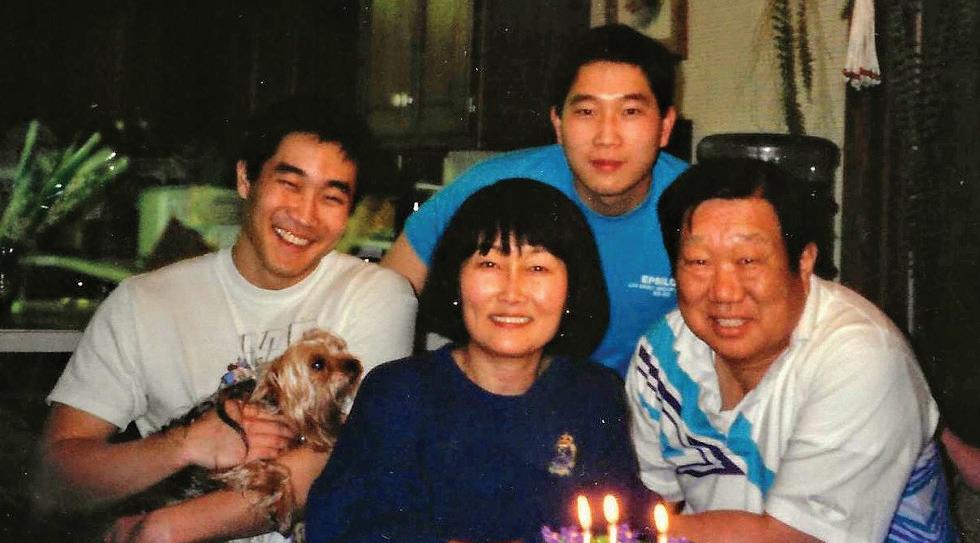
Racist rhetoric is putting Asian Americans at risk, and in order to combat this, we must hold political leaders accountable who demonize and scapegoat Asians. Call your member of Congress and urge them to support House Resolution 908 filed by U.S. representative Grace Meng that calls on all political o cials to condemn anti-Asian racism during this pandemic. Report hate incidents to our hate tracker, StandAgainstHatred.org, to aid our e orts to monitor hate incidents across the country and help strengthen advocacy e orts for hate crimes response and prevention. We will continue to engage our community partners and our governor and mayor on exploring ways to better respond to incidents together.
We need to fi ght for longer-term structural solutions that undo dangerous myths and stereotypes about Asian Americans, which is why Asian Americans Advancing Justice-Chicago is launching a Teaching Equitable Asian American Community History (TEAACH) campaign to implement a mandatory Asian American history curriculum in Illinois public schools. It is clear to me that what America’s future generations need is a deeper understanding that Asian Americans have been, and will continue to be, an important part of the American story, and that story includes our own connection to racial oppression.
The COVID-19 pandemic has created many more opportunities for us to tackle racial injustice. What is happening now has highlighted the deadly consequences of centuries of anti-Blackness and unaddressed health and economic disparities for the African American community, while at the same time flushing out the dormant anti-Asian xenophobia in our society. This is a moment for Asian Americans to actively build solidarity with Black communities to confront two sides of the same problem: the legacies of white supremacy that are hurting our communities.
Instead of showing our “American-ness” in the face of racism, Asian Americans, and all Americans, need to step up and unite around an undying commitment to achieving real racial justice in our country. I pray Chicagoans will lead the way. v
@andykangjustice
APRIL 23, 2020 - CHICAGO READER 31
The author (le ) with his brother Michael and his late parents Dr. Minjah Kang and Kiwon Kang ANDY KANG
SPEECH
‘American-ness’ On rejecting anti–Asian American rhetoric and standing up to hate
SAVAGE
By DAN SAVAGE
Q: I was raised in a religious home and didn’t lose my virginity until the embarrassing age of 26. I was told by the church to save it for marriage and I was a virgin until I met the woman who would become my wife at a party. I said to hell with it, we had a onenight stand, and we’ve been together now for eight years. I’m tall and slim and my wife is short and heavy. Like an idiot I believed it’s what’s on the inside that matters. My wife is the sweetest, most thoughtful person I’ve ever met, I love spending time with her, but I have absolutely no sexual attraction to her. As a result, I’ve all but stopped initiating sex and on the rare occasion when we do make love I make her come twice while I’m struggling just to get off.











I know it’s shallow and I know beauty is only skin deep but what am I supposed to do when seeing my wife naked sends me into an anxiety attack? When I’m helping out with laundry, I get bummed because there’s nothing in her wardrobe I find attractive on her. Even when I look at old pictures of us together I get extremely depressed because I know this is the best she’s ever going to look. It doesn’t help that she finds me handsome and regularly tells me so.
It’s gotten to the point where I find any woman who isn’t my wife desirable. (Including, but not limited
to, her family and friends.)

I should also mention that she has no interest in having an open relationship or threesome because she prefers having me “all to herself.” I don’t want to ask her to change because she’s perfectly happy with herself but I’m becoming increasingly resentful. What do I do? How do I tell her? And is there any way I can come out of this a good husband?

 —IN THE SHALLOWS
—IN THE SHALLOWS

A: I was so relieved to get all the way to the end of your letter without learning you had kids. Because that means I can advise you— with a clear conscience—to file for divorce and move the fuck out just as soon as it’s possible to do so. Not for your own sake, ITS, but for your wife’s sake. She deserves better.
You say you’re growing increasingly resentful. I hope your resentment is directed at all of the people who victimized you. Your wife isn’t one of them. It’s your parents you should resent, ITS, as well as all the sex-phobic bullshit artists out there masquerading as “faith leaders.”
You should be angry with yourself too. While I know from personal experience how a religious upbringing can put the zap on a kid’s head, you were a grown-ass man when you met your wife at that party. You couldn’t have slept with her that night—you couldn’t have lost


your virginity in a one-night stand—if you hadn’t already rejected nearly everything you’d been taught about sex. If you were capable of having premarital sex, you were capable of refraining from marrying the first person you slept with.

Your wife is gonna want to know why you’re leaving her—of course she is—but you’re not going to tell her the real reason. You’re going to make something up. You want kids and she doesn’t (or vice versa), you married too young (which is true), you have unresolved childhood issues (and don’t we all). While you won’t be able to spare your wife the pain of a breakup, ITS, you can spare her the pain of learning the person she’s been sleeping with for eight years is repulsed by her body. You can’t be a good husband to her, ITS, but you can be a decent ex-husband. And to do that—to be her decent and loving and supportive ex—you can’t set her self-esteem on fire on your way out the door.
And your wife’s body isn’t repulsive. She’s not someone you’re attracted to, ITS, and you’re not obligated to find short and round women sexually appealing. But while “tall and slim” are more closely associated with conventional concepts of attractiveness, ITS, not everyone’s into tall and slim. There are people who are into short and round and people out there who are
32 CHICAGO READER - APRIL 23, 2020 ll
LOVE Seeing my wife naked gives me an anxiety attack What’s on the inside does count.
OPINION ANDERSONVILLE UPDATES SUPPORTING OUR BUSINESS COMMUNITY IN THE WEEKS TO COME andersonville.org/updates Thrive in Challenging Times LIfe coaching Powerful one-on-one coaching to help you deepen your relationships, excel in your career, and reach your full potential! wrightfoundation.org/coaching
OPINION

attracted to all body types and people who are utterly indifferent to bodies. Your wife deserves the chance to find someone who’s sincerely attracted to her. Even being alone would be better than spending decades with someone who recoils from her touch.
For the record: What’s on the inside does count. It matters. If you met a woman who was more conventionally attractive—if you were with someone who was your idea of hot—and over time she revealed herself to be an asshole (if she was rude to waiters, if she was emotionally abusive, if she was a Trump supporter, etc.), your attraction to her would wither away. What you want— not what you’ll get, ITS, but the best you can hope for—is some combo of hot on the outside (subjective and personal) and good on the inside. And the longer you’re with someone, ITS, the more important good on the inside becomes. Time is a motherfucking meat grinder and it makes hamburgers out of us all. If you prioritize your idea of hot over all other qualities, you run the very real risk of spending decades with a person who has aged out of hot and was never nice.
Q : Long time reader asking

for advice. I’m a med student, I came to the U.S. when I was 18 in order to go to college, and I’m still in the U.S. I’m 25 now and I’ve been dating my boyfriend for about three years. We’re somewhat monogamous and have been living together for two years. I’m out as a gay man where we live but my parents and family back in Brazil have zero idea. As you may know, Brazil has a weird relationship with sexuality. Gay men are seen and for the most part very open but our culture is also very homophobic. My BF has been pressuring me to come out but I’ve been apprehensive considering how important family is to me. —FEARS A MASSIVE IMPLOSION LIKELY, YET . . .

A : Gay men don’t come out to our families because they’re unimportant to us. We come out to our families because they are important to us.
Family is important to you and you’re worried you might lose yours if you come out to them. But you’re definitely gonna lose them if you don’t. Because to keep your life a secret from them—to hide your boyfriend from them—you’re going to have to cut them out of your life. It’ll be little things at first, FAM, but over time the
amount of things you have to keep from them grows. Lies pile up on top of lies and the distance between you and your family grows. Before you know it, they don’t know you at all anymore and you don’t know them. Because you can’t risk letting them know you. So to avoid their possible rejection, you will have rejected them. You will have lost your family. I know, I know: It’s scary. I came out to my very Catholic family when I was a teenager. I was scared to death. But if they couldn’t accept me for who I am—if I couldn’t rely on their love and support—what was the point of having them in my life at all?
P.S. No one likes being someone’s dirty little secret. It hurts your boyfriend to see the person who claims to love him prioritize his family’s presumed bigotry (it’s possible they’ll react more positively than you think) over his feelings and dignity. By not coming out, FAM, you will lose the family you were born into and the one you’ve created with your boyfriend too. v
Send letters to mail@ savagelove.net. Download the Savage Lovecast at savagelovecast.com.
@fakedansavage

issue
APRIL 23, 2020 - CHICAGO READER 33
pleaserecyclethispaper Don’t miss an
Get the Next 12 Weeks of the Chicago Reader Delivered to Your Home CHICAGO’S FREE WEEKLY SINCE 1971 MARCH 26, 2020 STAY AT HOME chicagoreader.com/support
MARKETPLACE
Danielle’s Lip Service, Erotic Phone Chat. 24/7. Must be 21+. Credit/ Debit Cards Accepted. All Fetishes and Fantasies Are Welcomed. Personal, Private and Discrete. 773-935-4995
Go to chicagoreader.com/ matches to submit yours today.
Free Matches ads are not guaranteed and will run in print and online on a space-available basis.



WANT
E-mail classified-ads@chicagoreader.com with details or call (312) 392-2970












ATTENTION
TheDraftTenantSelectionPlan(TSP),Lease,andotherdocumentsthatwillapply






Levy
Levy
34 CHICAGO READER - APRIL 23, 2020 ll CLASSIFIEDS JOBS ADMINISTRATIVE SALES & MARKETING FOOD & DRINK SPAS & SALONS BIKE JOBS GENERAL REAL ESTATE RENTALS FOR SALE NON-RESIDENTIAL ROOMATES MARKETPLACE GOODS SERVICES HEALTH & WELLNESS INSTRUCTION MUSIC & ARTS NOTICES MESSAGES LEGAL NOTICES ADULT SERVICES
ADULT SERVICES
TO ADD A LISTING TO OUR CLASSIFIEDS?
the cannabis platform a Reader resource for the canna curious nuMed.com | 1308 W. North Ave Chicago’s friendliest cannabis shop Thursdays on Cannabis Conversations chicagoreader.com/joravsky Cannabis Conversations chicagoreader.com/ joravsky To advertise, call 312-392-2934 or email ads@chicagoreader.com www.neuromedici.com 312-772-2313 Findouttoday ifmedical cannabisorinfusiontherapyis rightforyou.Telemedavailable! Yourpartnersinhealthandwellness. Serving medical cannabis patients since 2015. An Essential Calm. Day or Night. Whole-plant hemp formulations for peace of mind and body. mineralhealth.co GET INVOLVED! The Reader 420 Companion is filled with great recipes, activities and coloring pages Your purchase supports the Reader. 15% of the proceeds will be donated to the Chicago Coalition for the Homeless. chicagoreader.com/420book
If you are a former 10/1/99 CHA leaseholder who has an interest in exercising your right to return, please read the information listed below.
to resident occupancy at Levy House are available for review and comment.
House is a senior property located in the Rogers Park community area, Chicago, IL. Units within this development will be available for eligible 10/1/1999 leaseholders who have yet to satisfy their right of return under the Relocation Rights Contract and eligible Project Based Voucher (PBV) applicants. The Chicago Housing Authority (CHA), to bring additional affordable housing opportunities to Rogers Park has worked in consultation with the developer to draft a TSP and Lease for use at Levy House. The 30-day public comment period will be held for CHA to receive oral and written comments on April 16 through May 15, 2020. Due to Covid 19, Chicago Housing Authority has suspended all public meetings. In lieu of the public comment hearing, we ask that comments be submitted electroni cally to commentontheplan@thecha.org. All comments must be received by May 15, 2020.
House TSP, Lease, & other documents will be available on CHA’s website beginning April 16 through May 15, 2020 at: https://www.thecha.org/about/plans-reports-and-policies/proposed-policies-out-public-comment Mail, E-mail or Fax comments to: Chicago Housing Authority Attention: Levy House Draft TSP & Lease 60 E. Van Buren Street, 12th Floor Chicago, IL 60605 commentontheplan@thecha.org Fax 312. 913.7837 If you have a question about this notice, please call the CHA at 312.913-7300. To request a reasonable accommodation, please call 312.913.7062. TTY 866.331.3603







































APRIL 23, 2020 - CHICAGO READER 35 FINANCING AVAILABLE Licensed, Bonded & Insured—IL Roofing Lic. #104.013526 For 40 years, 30,000+ satisfied customers have trusted Second City. • ROOFING • BRICKWORK • GARAGES SHINGLE ROOFS NEW GARAGESFLAT ROOFS ROOFING, GUTTERS & MORE the platform The Chicago Reader Guide to Business and Professional Services www.herreralandscapeschicago.comDISCOVER YOUR BLISS www.intimate-bliss.com *WARNING: Must be 18 years or older to visit website and/or place order. To advertise, call 312-392-2934 or email ads@chicagoreader.com SAVE BIG ON A NEW HVAC SYSTEM FINANCING AVAILABLE CREDIT CARS ACCEPTED Up to $2,500 savings for a limited time! Call today for a free estimate! 773-895-2797 | www.MironHVAC.com -Energy Efficient -Innovative comfort features -Great maintenance contracts -24-Hr Emergency Service Psychic ReadingsPalm and Tarot If you are worried, troubled, sick or unhappy through love, business, marriage, luck or whatever your problem may be, I have reunited the separated, healed the sick and help many people with money problems. Whereothershavefailed.Ihave succeeded. I will not ask what you came in for. I will tell you. (773)-540-5037 1222 E 47th St She guarantees to help you. No problem is too big for her COLLABO TIVE PREMARITAL FAMILY DIVORCE MEDIATION Brigi e Schmidt Bell, P.C. Phone and Video Consultations. Call today. BrigitteBell.com Lawyers@bsbpc.com 312-360-1124 travel home improvement psychic real estate advertising books romance legalfuneral services entertainment American Owned American Made We Offer Quality Affordable • At Need Funeral Services • Pre-Planned Funeral Services • Traditional Funeral/Cremation Services • Direct Cremation/Direct Burial • Memorial Services • Specializing in Veterans Services 773-956-4000 5112 S. Western Ave | Chicago, IL 60609 “Let all that you do be done in love” - 1 Cor 16:14 www.GraceAndMercyFS.biz Serving Chicagoland and NW Indiana YOUR AD HERE


Do Not Touch Puzzle Piece together the first of our iconic Stay Home cover series. This is a 432-piece, 18” x 24” puzzle. The cost of this puzzle is $60 + $10 for shipping. (U.S. orders only) Chicago Reader chicagoreader.com/puzzle $24.20: Printed, bound copy, includes a digital download (+ $4.20 shipping & handling) Order your printed copy by 4/23 to be guaranteed a book from the 1st print run. $14.20: Digital download The Reader 420 Companion is filled with great recipes, activities and coloring pages. Details may be found at chicagoreader.com/420book Your purchase supports the Reader 15% of the proceeds will be donated to the Chicago Coalition for the Homeless 21+ only

































 STEUER
STEUER








 By BEN JORAVSKY
By BEN JORAVSKY
















































































































































































 By DERRICK CLIFTON
By DERRICK CLIFTON




 @DerrickClifton
@DerrickClifton














 —IN THE SHALLOWS
—IN THE SHALLOWS


















































